The job of every American president before winning the White House
Life before the White House
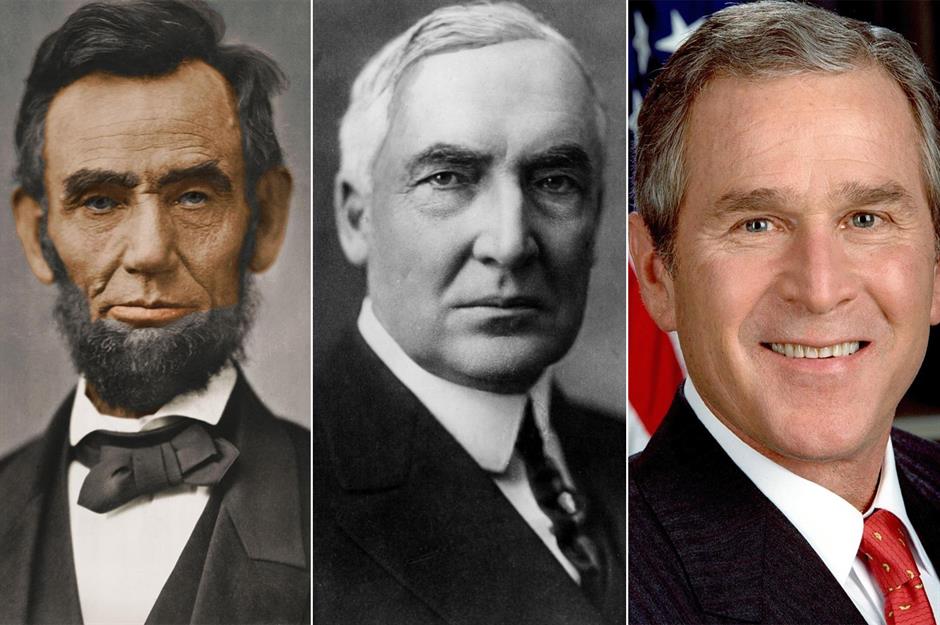
It's America's top job – but what kind of careers did the presidents of the United States have before they won the White House?
From the predictable (we're talking lawyers and politicians) to the more surprising (think Hollywood movie stars and peanut farmers), read on to discover what each POTUS did before they took office.
George Washington: surveyor, military commander, planter
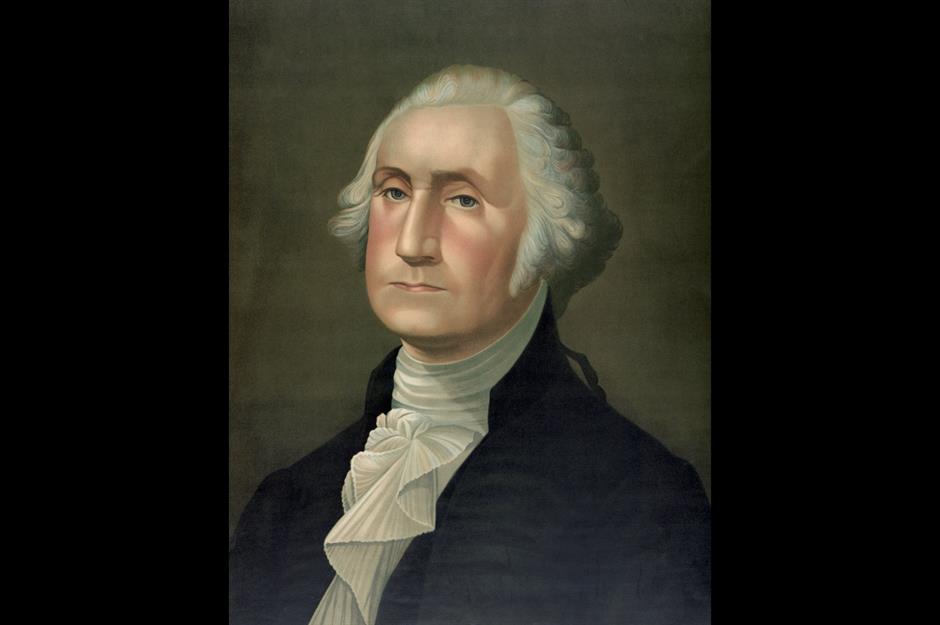
Before launching his well-known and prolific military career in the early 1750s, America’s first president worked as a land surveyor. However, as one of the wealthiest people to feature on this list, George Washington’s riches actually stemmed from a problematic past: he was born into a wealthy planter family that amassed much of its fortune from the exploitation of enslaved people.
He inherited the family plantation, Mount Vernon, in the 1760s and immediately worked to expand the estate. He is known to have owned 123 enslaved people but freed them all on the death of his wife Martha in 1802.
Following his role leading the Continental Army in the Revolutionary War, he then presided over the 1787 Constitutional Convention, which established the Constitution and the federal government. In 1789, Washington was elected as the first president, serving two terms until 1797.
John Adams: teacher, lawyer, VP
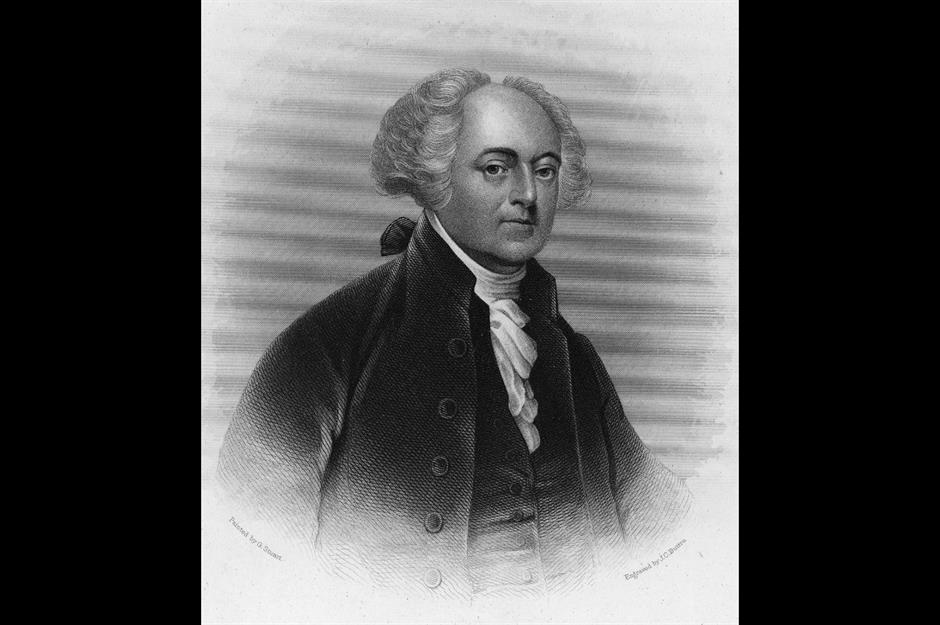
After graduating from Harvard in 1755, John Adams worked as a teacher in Massachusetts – though it was more of a means to an end while he considered his options. He eventually settled on law.
With a degree in hand, Adams rose to prominence as a leader of the American Revolution. During the Boston Massacre – a deadly riot between colonists and British soldiers in 1770 that ultimately sparked the Revolutionary War – he successfully defended the British soldiers against murder charges.
He went on to help develop the Declaration of Independence in 1776 and served as Washington's vice president for two terms. As a member of the Federalist Party, he was elected as president for a single term in 1797 when Washington retired.
Thomas Jefferson: planter, lawyer, politician, VP
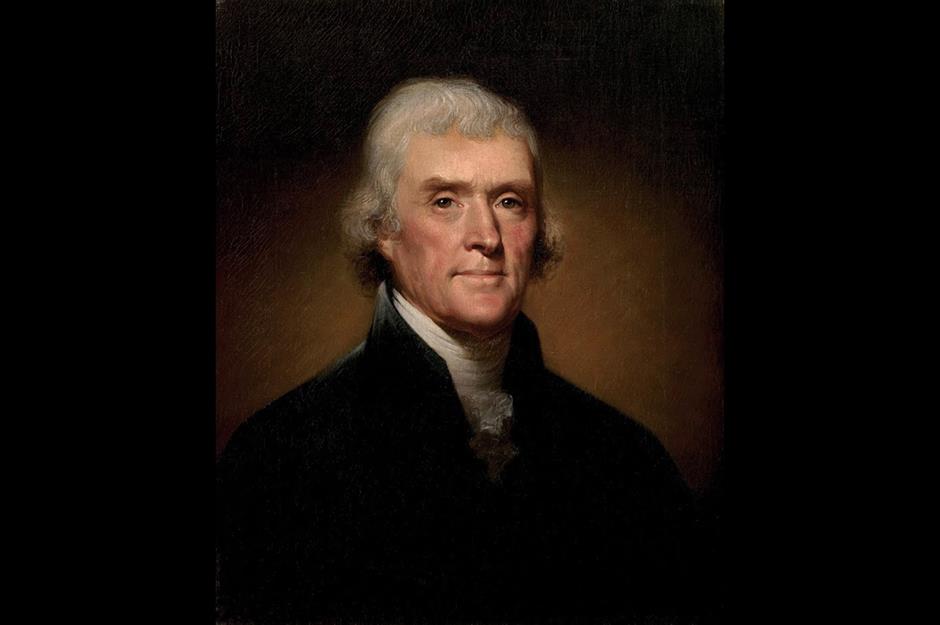
Thomas Jefferson boasted a diverse career prior to taking office, dabbling in everything from writing and inventing to philosophy and architecture. Primarily, though, the Founding Father was a planter, lawyer, and politician. At 21, he inherited his family's 5,000-acre plantation. It's said he owned over 600 enslaved people throughout his lifetime, acquiring an inflation-adjusted fortune of around $295 million before even becoming president.
Among his many prestigious political positions prior to becoming president, he wrote the Declaration of Independence in 1776 and became the governor of Virginia in 1779. He also served as secretary of state under George Washington in 1789 and VP under John Adams in 1796.
Jefferson was elected president in 1801, serving until 1809 as a member of the Democratic-Republican Party, which he founded with the future POTUS James Madison. Despite his previous wealth, various bad investments and an extravagant lifestyle left him broke. Following his death on the Fourth of July in 1826, Jefferson's family faced massive debts and was forced to auction off his assets.
James Madison: politician, planter, secretary of state
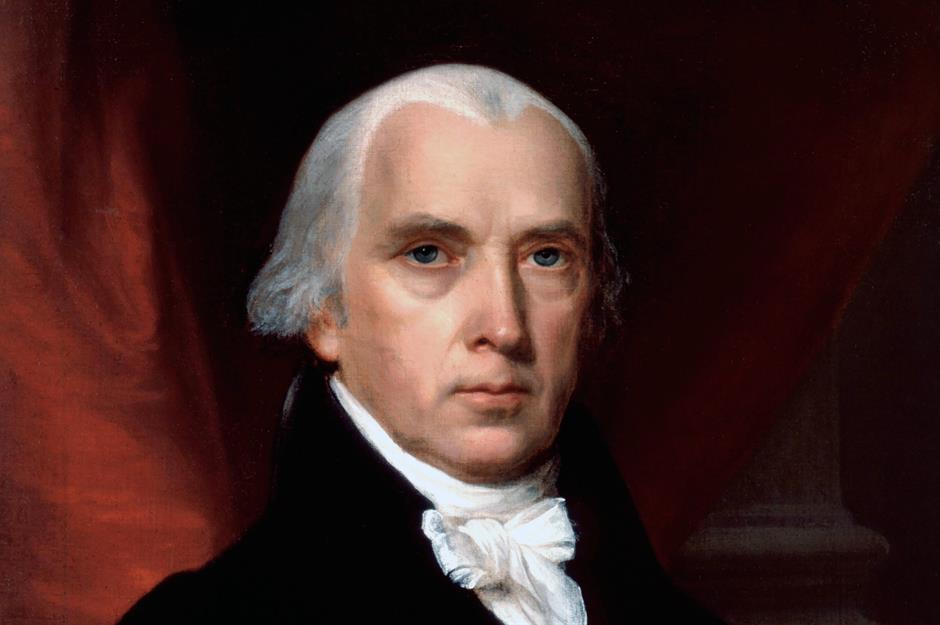
The fourth president, James Madison, was also born into a wealthy planter family. After graduating from Princeton in 1769 he returned home to the family plantation in Virginia, where he taught his younger siblings. Poor health meant he was unable to join the army and instead, he began avidly studying law.
Madison pursued a political career and acted as a member of both the Virginia House of Delegates and the Continental Congress. He was elected to the US House of Representatives in 1789 and became a close adviser to President Washington.
In addition to being intrinsic to the creation of the Constitution and the Bill of Rights, he also co-wrote The Federalist Papers and co-founded the Democratic-Republican party. He was appointed secretary of state by Thomas Jefferson in 1801, a job he held until becoming president in 1809, serving for two terms.
James Monroe: soldier, lawyer, politician
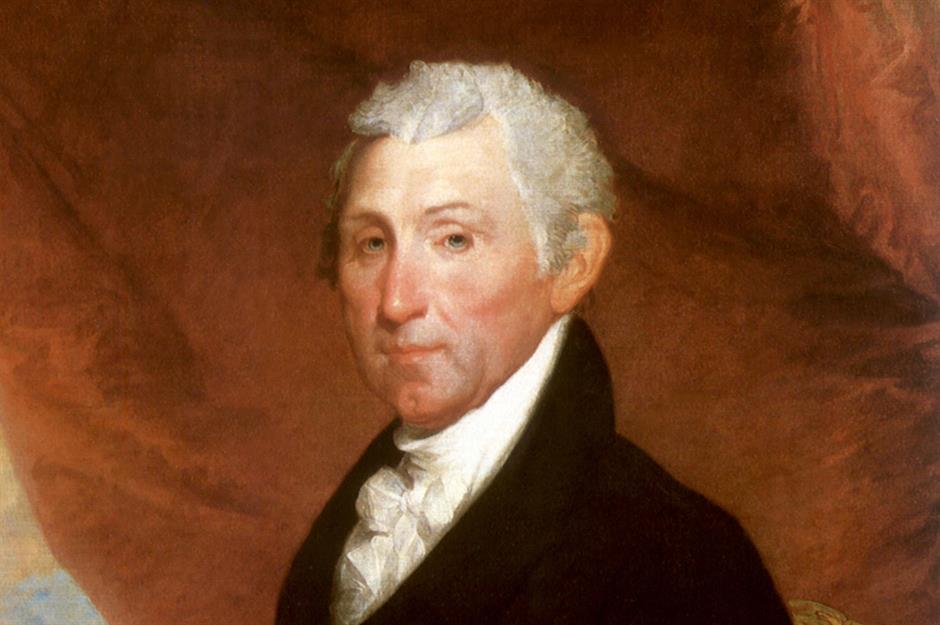
After Founding Father James Monroe fought in the Revolutionary War, he went on to study law under Thomas Jefferson from 1780 to 1783, opening a law practice in Virginia in 1786. However, Monroe decided to turn his hand to politics and served in the Continental Congress before being elected to the US Senate in 1790.
Like many of his fellow presidents, Monroe enjoyed a successful political career prior to his presidency. He left the Senate in 1794 to become President Washington's ambassador to France. He would later become ambassador to Great Britain, too. Between 1799 and 1817, he was the governor of Virginia and held various cabinet roles, including secretary of war due to his military experience. He became president as a member of the Democratic-Republican Party in 1817 and remained in office until 1825.
John Quincy Adams: lawyer, foreign ambassador, politician, secretary of state
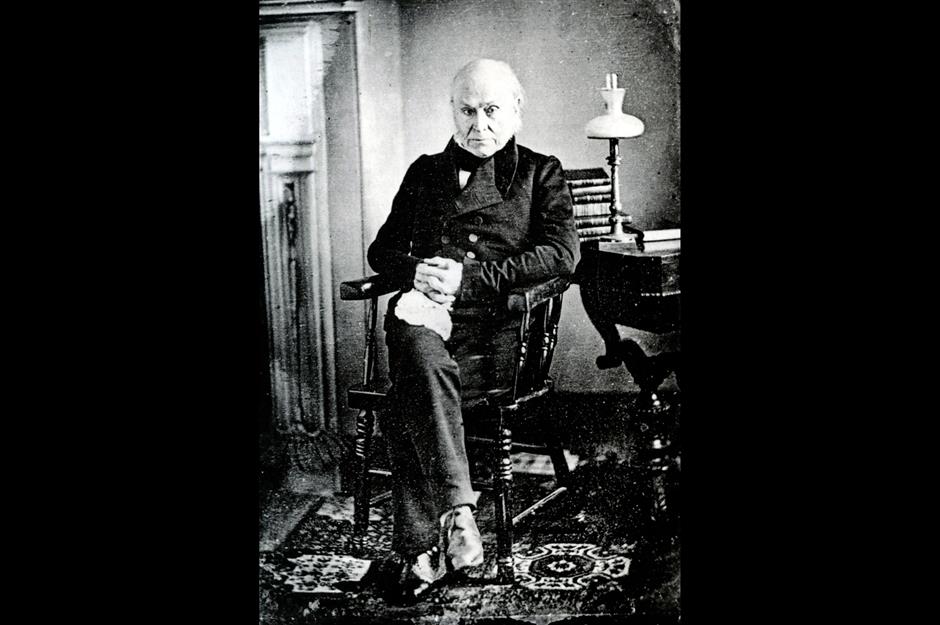
The sixth president, John Quincy Adams, was the son of the second president, John Adams. Upon graduating from Harvard in 1787, the younger Adams studied law and opened his own legal practice in Boston in 1790. During this time, he wrote a series of newspaper articles supporting George Washington. These captured Washington’s attention and launched Adams’ political career, with the president appointing him US minister to the Netherlands in 1794.
Adams went on to build an extensive career in foreign service and successfully ran for the Massachusetts Senate in 1802 and the US Senate in 1803. He also taught rhetoric at Harvard before going to the White House.
In 1817, President Monroe appointed him secretary of state, largely due to his many years of diplomatic experience. Then, running on behalf of the Democratic-Republican Party, he was elected president in 1825, serving only a single term until 1829.
Andrew Jackson: lawyer, military general, politician
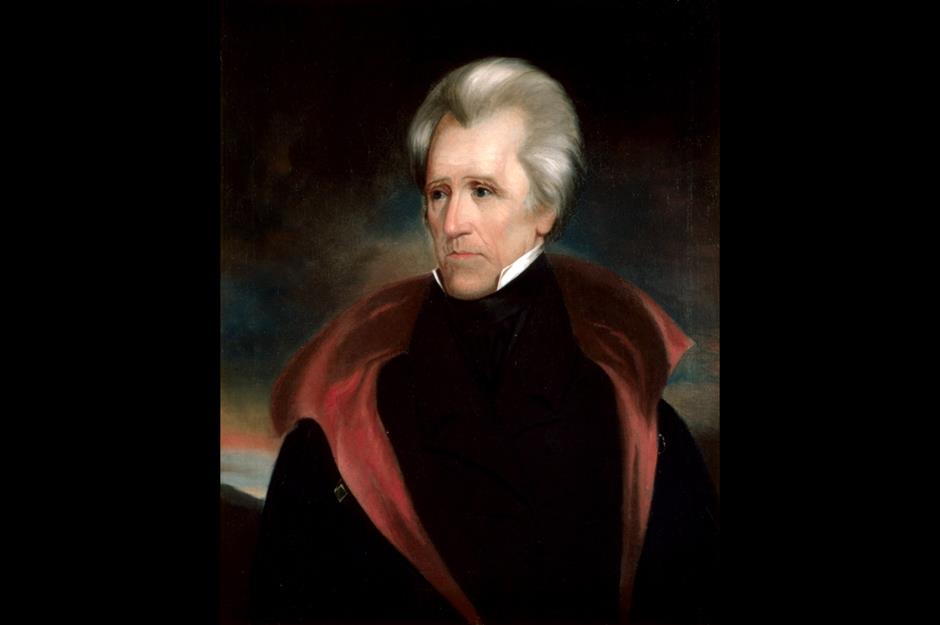
In contrast to the presidents who came before him, Andrew Jackson was born into poverty. After being admitted to the bar in North Carolina in 1787, he built his reputation as a lawyer. His wife, Rachel, was from a very wealthy family, and following her death in 1828, which was shortly before Jackson took up residence in the White House, he inherited a fortune.
Jackson had long been interested in politics, and in 1796 he was elected as Tennessee's first representative to Congress. The following year, he joined the US Senate but quickly resigned to be elected to the state’s Supreme Court, serving until 1804.
Over the years, he gained recognition as a war hero, particularly after leading forces to victory in the Battle of New Orleans in 1815. His military achievements sparked speculation that he would run for president, but he was thwarted by John Quincy Adams in 1824. Jackson eventually defeated Adams as the Democratic candidate in the 1828 election and served as president from 1829 until 1837.
Martin Van Buren: lawyer, politician, VP
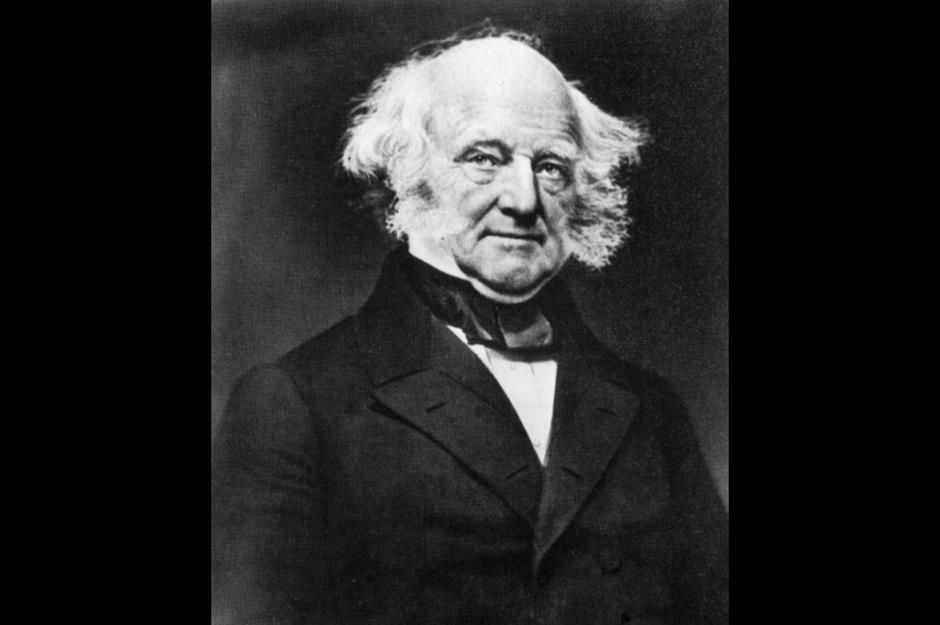
Law was evidently a popular career choice for many of the names on this list, with Martin Van Buren also a lawyer by trade. As a legal apprentice in 1796, Van Buren participated in – and won – his first court case at the tender age of 15. After completing his studies in NYC and being accepted to the bar, he returned home to Kinderhook, New York, and opened his own law practice with his half-brother.
In the footsteps of fellow presidents, Van Buren switched from law to politics in 1813, when he was elected to the New York Senate. He was elected to the US Senate in 1821 and subsequently took a somewhat traditional path to the presidency. Andrew Jackson appointed him secretary of state in 1829, and he rose to the position of vice president in 1833, also under Jackson. He was elected President of the United States in 1836 as the Democratic candidate and served from 1837 until 1841.
William Henry Harrison: military officer, politician
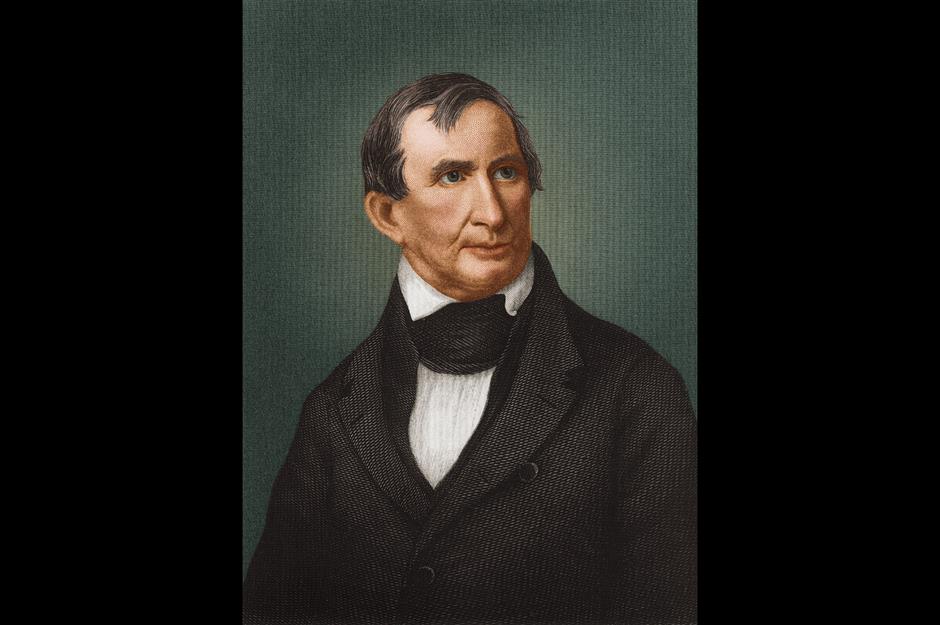
Politics was in the Harrison family's blood, as President Harrison's father, Benjamin, was a signatory of the Declaration of Independence as well as the governor of Virginia. Furthermore, the president's grandson, also named Benjamin Harrison, would go on to become the 23rd president. However, William Henry Harrison kickstarted his career in an entirely different field, studying medicine at the University of Pennsylvania. He didn't graduate, however, and dropped out to enlist in the army in 1791.
Following a successful military career, Harrison turned to politics. He served in a variety of roles, including as a member of the US House of Representatives, and was also elected to the US Senate. He unsuccessfully ran for president in 1836, and was defeated by Martin Van Buren. He triumphed over Van Buren in the 1840 election, entering the White House in 1841 as the first POTUS affiliated with the Whig Party. The victory was short-lived. At 68, he was the oldest president to be elected at the time, and he died just 32 days after taking office following a brief battle with pneumonia. He served the shortest tenure in US presidential history.
John Tyler: lawyer, politician, VP
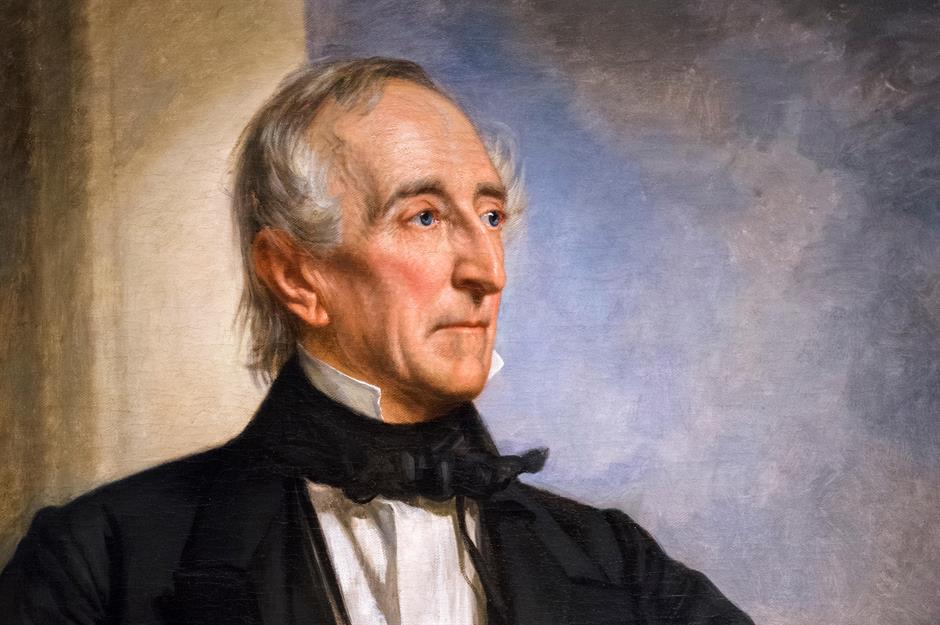
Following the sudden death of William Henry Harrison, Vice President John Tyler was sworn in as president two days later. Tyler followed a tried-and-tested path to the presidency, beginning his career as a lawyer in 1809 before transitioning into politics after being elected to serve in Virginia’s House of Delegates.
Tyler's political career continued to progress, and he was appointed governor of Virginia in 1825 before being elected to the US Senate in 1827. He then rose to the vice presidency under William Henry Harrison, taking office in 1841 after the president's untimely death. Tyler served just a single term, leaving office in 1845 after being expelled from the Whig Party.
James K. Polk: lawyer, politician
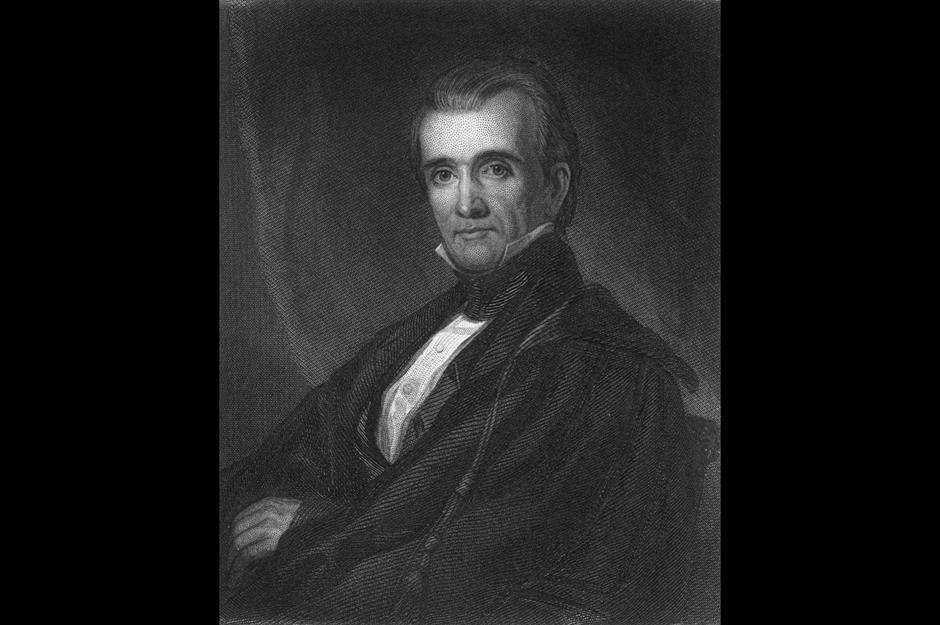
Another lawyer-turned-president, James K. Polk began his career in 1820 when he was admitted to the Tennessee bar. He opened a legal practice and became highly successful in his field. He was an ardent admirer of President Jackson, and in 1825 launched his own political career when he was elected to the US House of Representatives.
Polk continued to climb the ladder, rising to the position of governor of Tennessee in 1839. Representing the Democratic Party, he was elected president in 1844 and served between 1845 and 1849.
Zachary Taylor: military officer
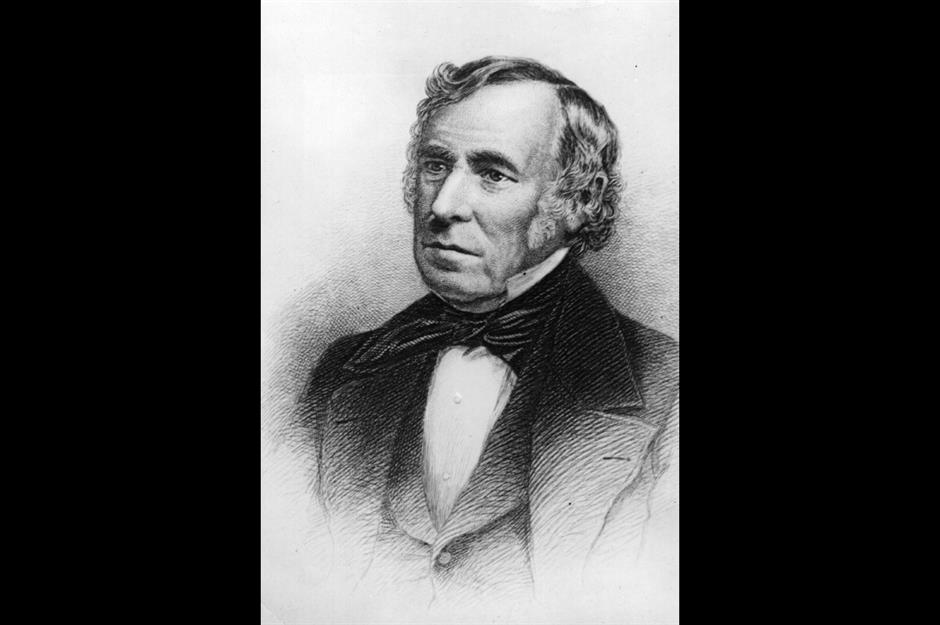
Unusually, Zachary Taylor had no political experience before entering the White House; rather, it was a long and distinguished military career that led him to the prestigious post. He joined the army in 1808 and served for almost 40 years, climbing the ranks to become major general in 1846. Taylor led his troops to great victories over the years, including defeating the Mexican army during the Mexican-American War in 1847.
This victory garnered him hero status, and, as a result, the Whigs viewed him as an ideal presidential candidate. He was elected in 1848 and served from 1849 until his death the following year. He is believed to have died from a stomach infection, although rumors at the time claimed he had been poisoned.
Millard Fillmore: lawyer, politician, VP
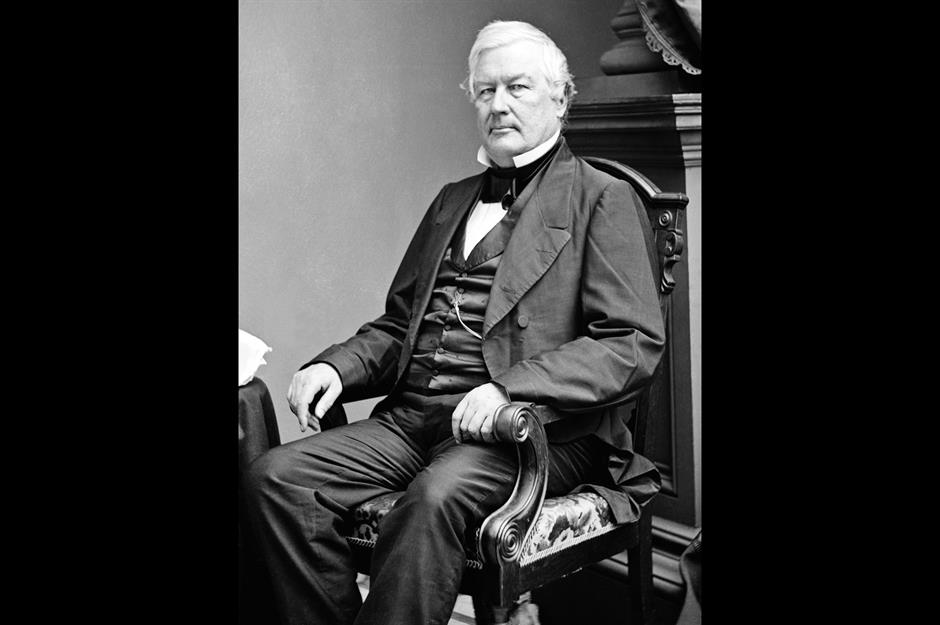
Following the untimely death of President Taylor, VP Millard Fillmore assumed power. Unlike Taylor, Fillmore took a more traditional path to the presidency, establishing himself as a lawyer in New York before being elected to the US House of Representatives in 1832.
He was appointed vice president in 1848 by the ill-fated Zachary Taylor and served in the role from 1849 until Taylor's sudden death in 1850. Fillmore, a Whig party member, would be the final president affiliated with neither the Democratic nor Republican parties, and served from 1850 to 1853.
Franklin Pierce: lawyer, politician, military officer
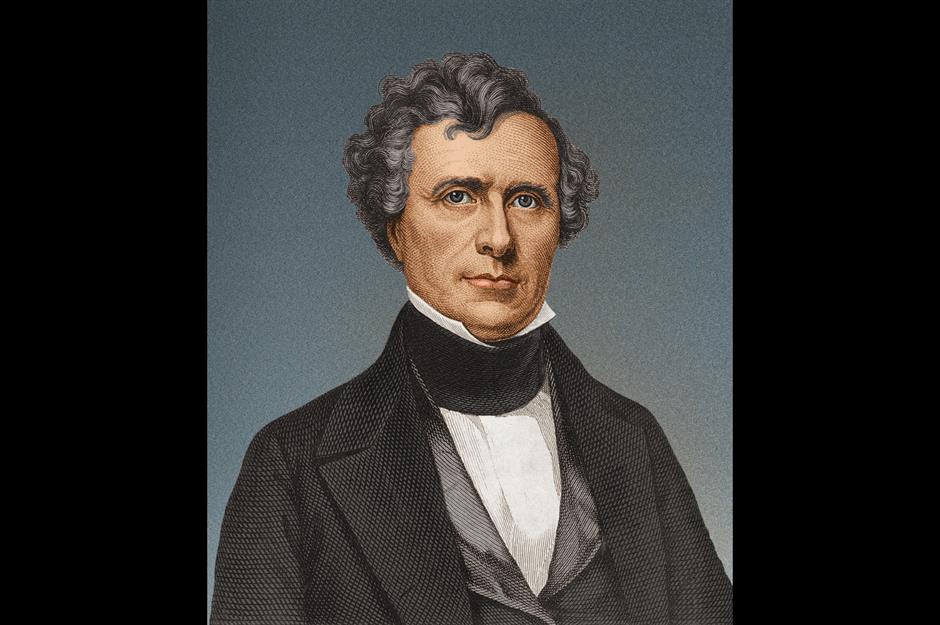
Being a lawyer appears to be the best accolade to have on your resumé if you ever plan to run for president. Franklin Pierce passed the bar in 1827 but set his sights on politics, serving in the New Hampshire state legislature between 1829 and 1833. He then spent nearly a decade in Congress before resigning.
Pierce continued to practice law and served as an officer in the military during the Mexican-American War. In 1848, following his stint with the army, he returned to politics and won the 1852 presidential election as the Democratic candidate. At 47 years of age, he was the youngest man to have been elected at the time. He held the position for a single term (1853-1857) and was denied renomination by his party.
James Buchanan: lawyer, politician, secretary of state
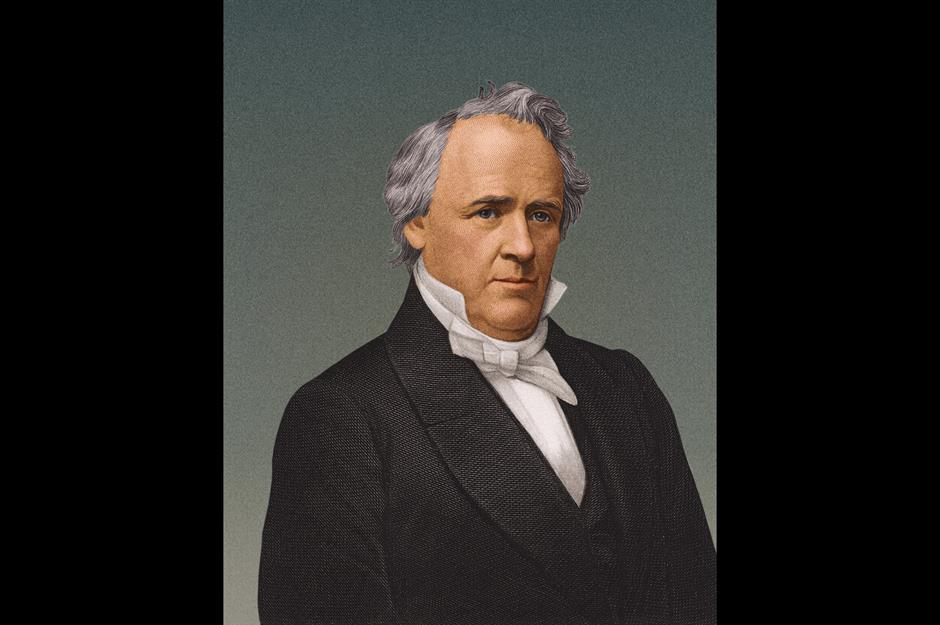
Democratic candidate James Buchanan was the next president to take the oath of office, and his road to the presidency wasn't too dissimilar to that of his predecessor, Franklin Pierce. Buchanan was a lawyer by trade, but his knack for public speaking pushed him into politics. He first served in the Pennsylvania legislature from 1814 to 1816 and later spent time in the US Congress.
Buchanan had ample experience before taking on the presidency, having served in the administrations of Andrew Jackson, James K. Polk, and Franklin Pierce, as well as in foreign service. He eventually became POTUS in 1857, remaining in office for a single term until 1861.
Abraham Lincoln: rail-splitter, storekeeper, postmaster, surveyor, lawyer, politician
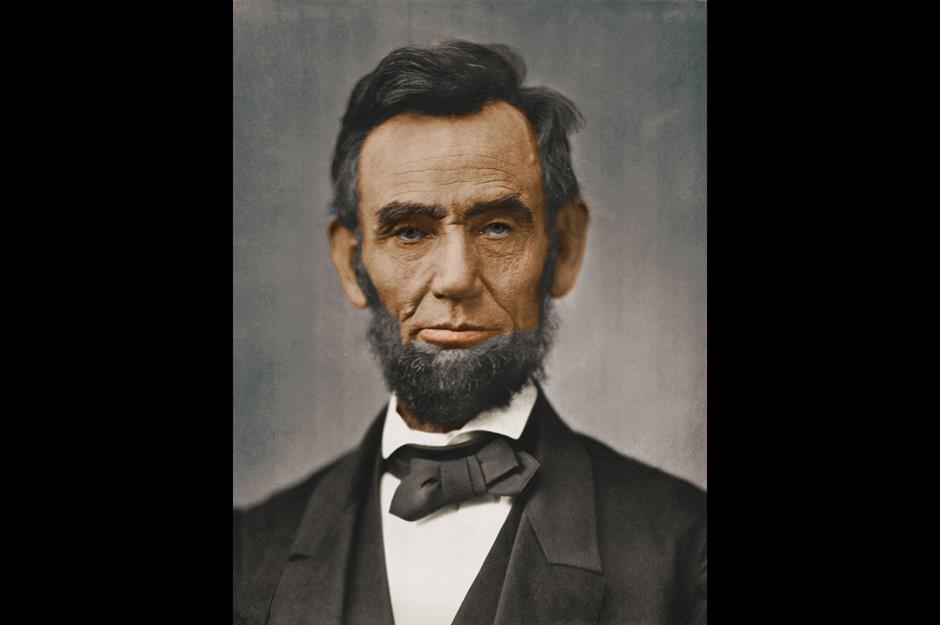
Abraham Lincoln was born into a farming family but opted to try his hand at various careers off the farm: he worked as a rail-splitter, a storekeeper, a postmaster, and a surveyor. He considered becoming a blacksmith but eventually decided to study – what else? – law. On passing the bar in 1836, he became a successful lawyer in Illinois.
Parallel to his distinguished legal career, Lincoln also entered politics, initially as a member of the Whig Party. From 1834 to 1842, he served in the Illinois State Legislature before moving on to Congress, where he served a single term. He later joined the Republican Party, and after winning the 1860 election, he fulfilled his long-held desire to become president. However, the ill-fated Lincoln would become the first president to be assassinated while in office when he was shot dead by John Wilkes Booth in 1865.
Andrew Johnson: tailor, politician, VP
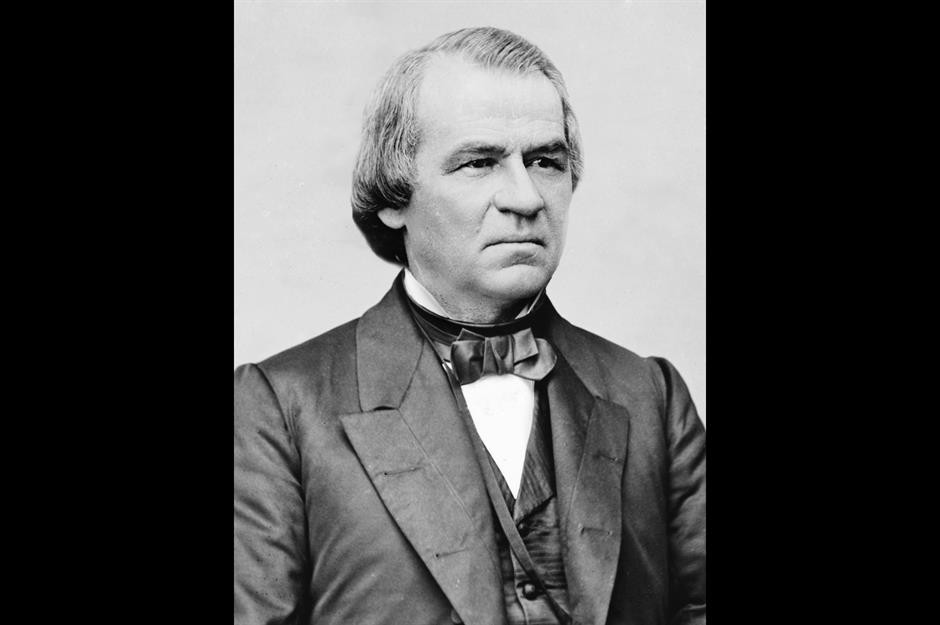
Following President Lincoln's assassination, Andrew Johnson entered the White house in 1865. Far from a traditional president, he grew up in poverty and was illiterate as a child. He started working at 14 years old as a tailor’s apprentice, and got married at 18 to Eliza McCardle, a shoemaker's daughter, who taught him to read and write in 1827.
When he entered politics, Johnson's impoverished background served as an asset, and he became something of a champion for the underprivileged classes who sought a political voice. He started out as the mayor of Greeneville, Tennessee, in 1834, and over the next 20 years he spent time in Congress and later became governor. Johnson was then named Lincoln's vice president in 1864, and he stepped up to the presidency after Lincoln's unexpected death, remaining in office until 1869.
Ulysses S. Grant: military commander

Yet another to win the White House through his status as a war hero, Ulysses S. Grant became president in 1869 as a member of the Republican Party. Grant had shown little interest in military life. However, when his father persuaded him to attend West Point military academy, the 17-year-old Grant reportedly agreed because the alternative was no further schooling. He graduated in 1843 and served in the Mexican-American War shortly afterward.
Grant went on to enjoy a successful military career. In 1864, he was appointed to the rank of lieutenant general. That same year, during the Civil War, he gained command of the Union forces, ultimately leading them to victory. His success as a commander earned him popularity with the people, marking him as an ideal presidential candidate. He was elected in 1869 and served for two terms. At 46, Grant was the youngest man to become president when he moved into the White House.
Rutherford B. Hayes: lawyer, soldier, politician
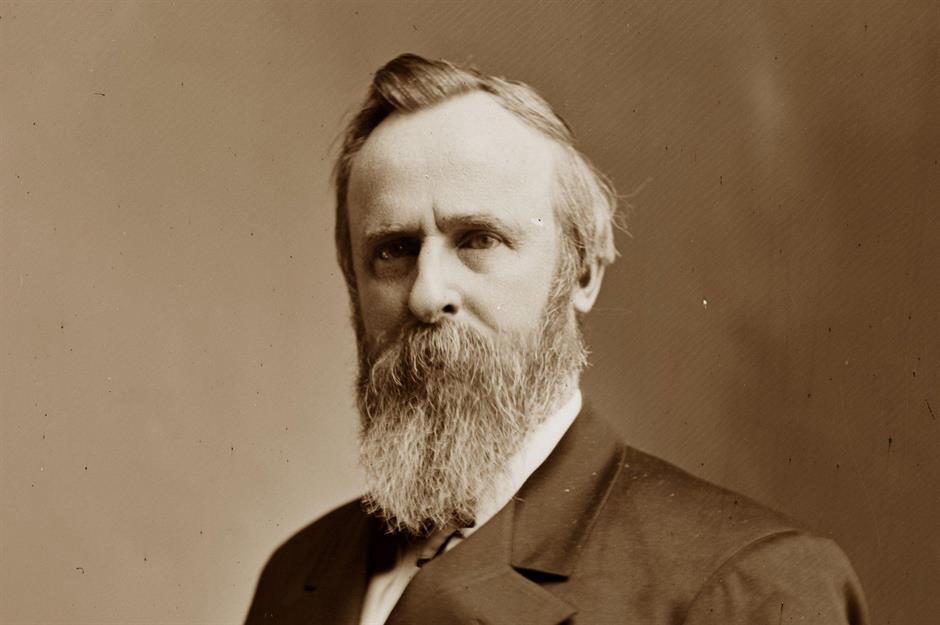
The next president, Rutherford B. Hayes, had a more traditional resumé behind him when he took the oath of office. Another lawyer, Hayes had attended Harvard before returning to Ohio in 1845 to establish his own legal practice. Following a brief stint in the Union army, Hayes was elected to the US House of Representatives in 1865 and then elected governor of Ohio in 1868.
Hayes won the presidential election in 1877 but entered the White House at a challenging time due to the deep divisions caused by the Civil War. He held the post for a single term.
James A. Garfield: teacher, military officer, politician
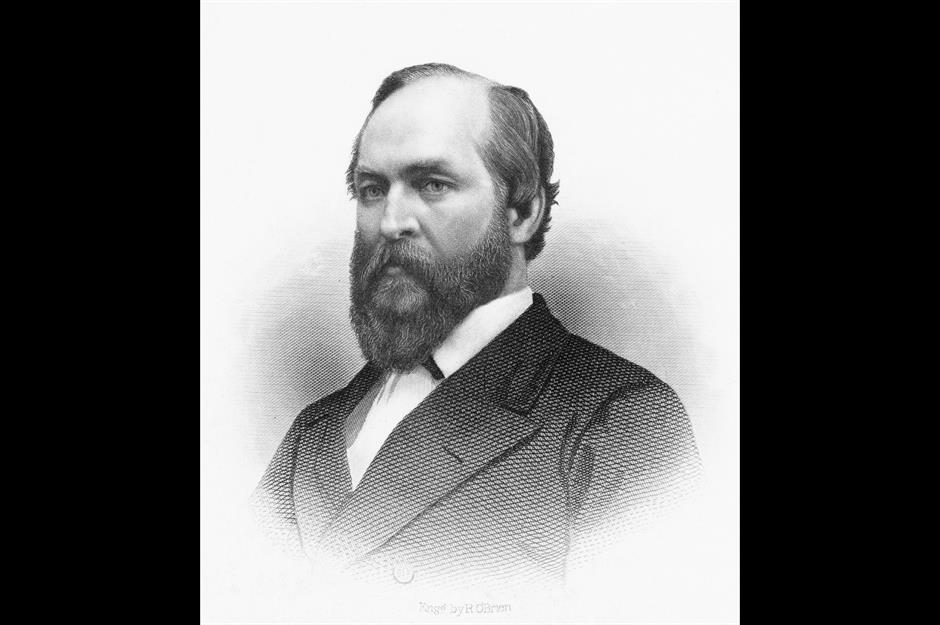
Born to impoverished farmers in Ohio, James A. Garfield had a diverse start to his career. He first attended the Western Reserve Eclectic Institute in Ohio and graduated from Williams College in Massachusetts in 1856, before returning to the institute as a professor of ancient languages. In 1857, at the age of 25, he was elected president of the school while also studying law and being ordained as a minister. However, he soon discovered his true calling was politics.
An anti-slavery advocate, Garfield became affiliated with the Republican Party and was elected to the Ohio legislature in 1859. During the Civil War, he rose to the rank of major general and was elected to the US House of Representatives. Garfield served Ohio as a US representative for nine terms before being elected president in 1881. However, just 200 days into office, he became the second president to be assassinated.
Chester A. Arthur: lawyer, tariff collector, politician, VP
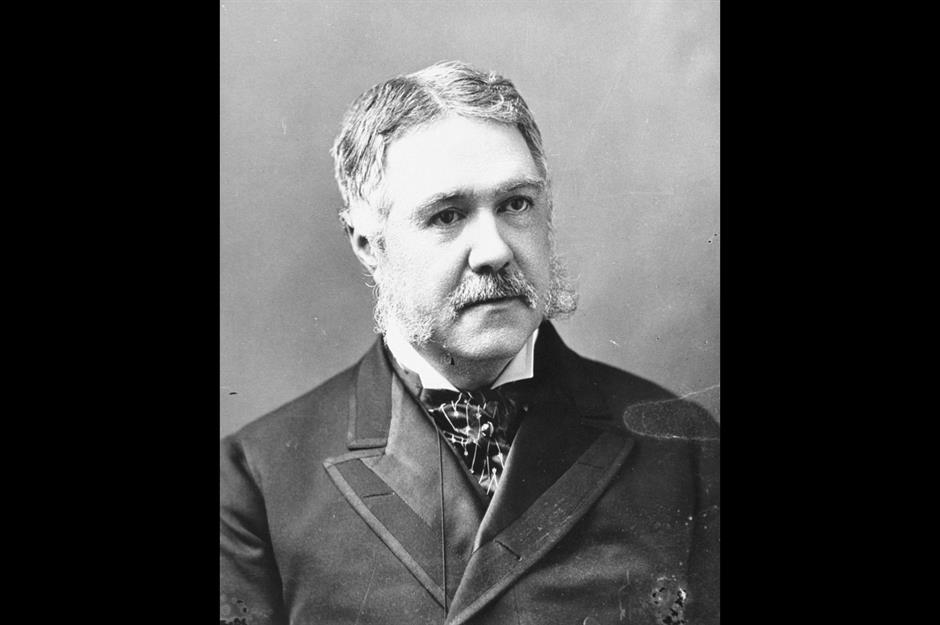
Vice President Chester A. Arthur ascended to the presidency following Garfield's assassination. The son of a religious minister, Arthur was originally a lawyer and he defended the rights of African Americans throughout his legal career. In the 1850s, he became interested in politics and affiliated with the Republican Party.
In the 1860s, Arthur developed a close relationship with Roscoe Conkling, a Republican senator from New York. With Conkling's support, Arthur was appointed customs collector of the Port of New York City by President Grant in 1871, a position that helped to launch his political career. He served as vice president under President James A. Garfield between March and September 1881, unexpectedly rising to the rank of POTUS until 1885.
Grover Cleveland: lawyer, sheriff, politician
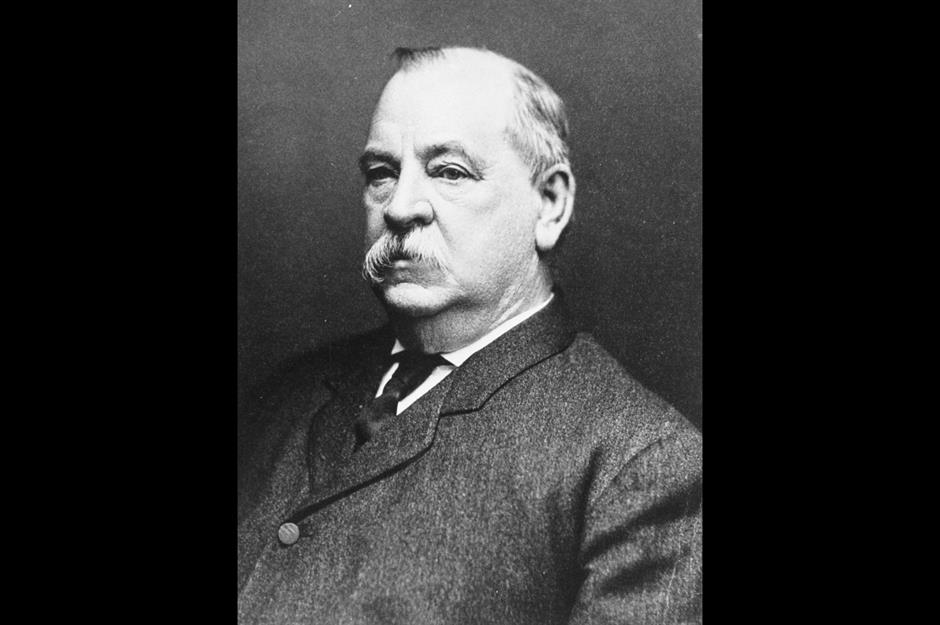
Grover Cleveland hailed from New Jersey. Like many of his predecessors, he started his career in law, opening his own practice in 1862. Soon after, he entered politics as a member of the Democratic Party, becoming the assistant district attorney of Erie County, New York, and serving as county sheriff.
Despite having little political experience, Cleveland rapidly rose to the top of the ladder due to Democratic voters fondly remembering his time as sheriff. In 1882, he was elected mayor of Buffalo and then governor a year later. Cleveland was elected president as the Democratic candidate just two years later, serving a single term between 1885 and 1889. Refusing to accept defeat, Cleveland was the first president in US history to leave the White House and return for a second term, serving once again between 1893 and 1897.
Benjamin Harrison: lawyer, military officer, politician
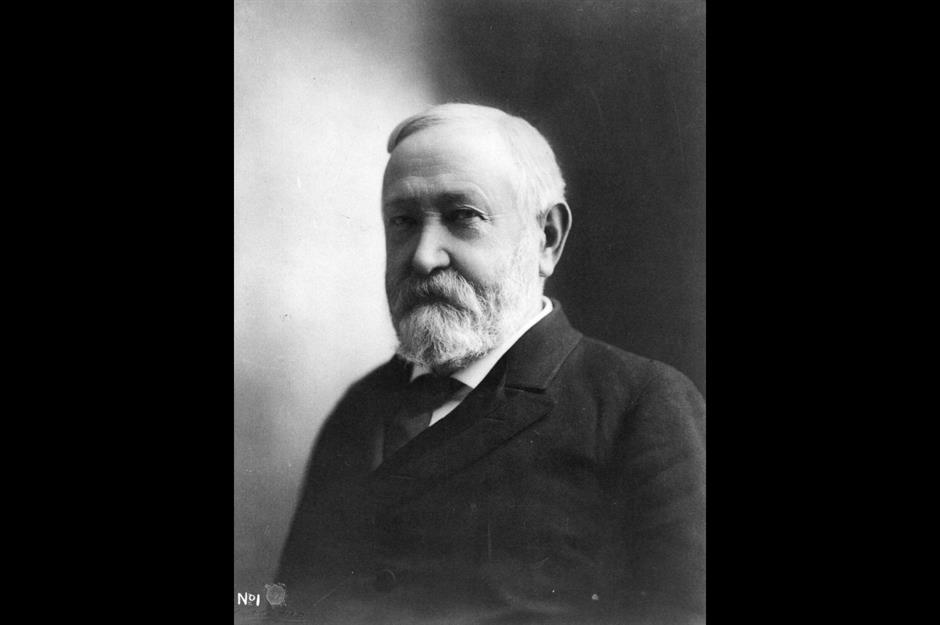
Following in the footsteps of his grandfather is President William Henry Harrison. After graduating from Ohio’s Miami University in 1852, Benjamin Harrison married and relocated to Indiana where he practiced law. He was appointed Indianapolis city attorney in 1857 and during the Civil War he served as an officer in the Union army, rising to the rank of brevet brigadier general.
Joining the Republican Party, he served in the US Senate from 1881 to 1887 before getting elected as president in 1888. He was only in office for a single term, defeated by Grover Cleveland, whom he had previously defeated for the presidency.
William McKinley: military officer, lawyer, politician
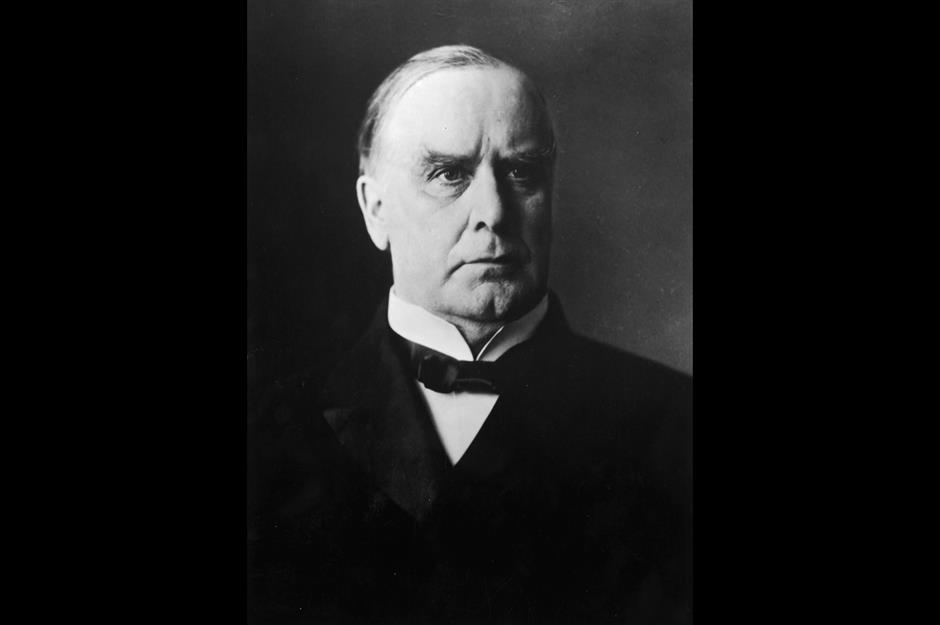
William McKinley was just 18 at the start of the Civil War and enlisted in the Ohio regiment under the leadership of another future president, Rutherford B. Hayes. (McKinley was actually the last president to serve in the Civil War.) By the time he was discharged in 1865, he had risen to the rank of brevet major. He returned to Ohio to study law and was admitted to the bar in 1867.
During his time as a lawyer, McKinley became an avid supporter of the Republican Party, and he spent roughly 20 years in Congress and serving as governor of Ohio. In 1897, he won the first of two presidential elections. He was assassinated in 1901, just six months into his second term.
Theodore Roosevelt: politician, rancher, military officer, VP
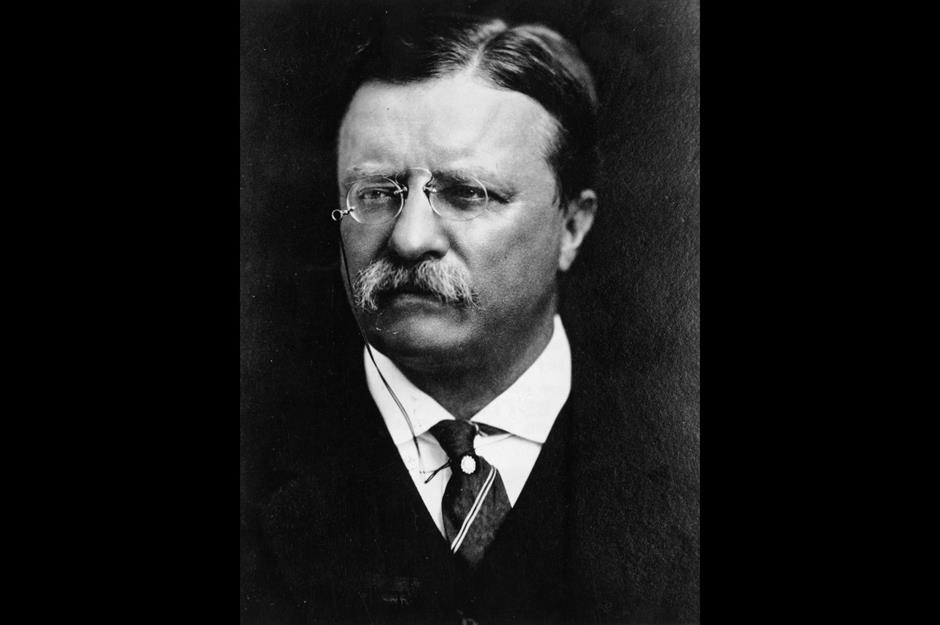
Theodore Roosevelt was among the wealthiest presidents, inheriting a fortune from his father while still a student at Harvard. Roosevelt graduated in 1880 and quickly turned to politics as his chosen career – he was elected to the New York State Assembly at just 23 years old. However, overcome with grief after his wife and mother both died on the same day from separate illnesses, Roosevelt retired from public life in 1884 and bought a cattle ranch in South Dakota.
Two years later, an attempt to return to public service by running for mayor of New York was unsuccessful. However, he remained active in politics as a member of the US Civil Service Commission, and when the Spanish-American War broke out in 1898, Roosevelt became a respected military leader. In 1899, he was elected governor of New York, and in 1901 he became vice president under William McKinley. Roosevelt assumed the presidency following McKinley's murder, and, despite the tragic circumstances behind his promotion, he became known as a great leader and reformer. He served between 1901 and 1909.
William Howard Taft: lawyer, judge, politician
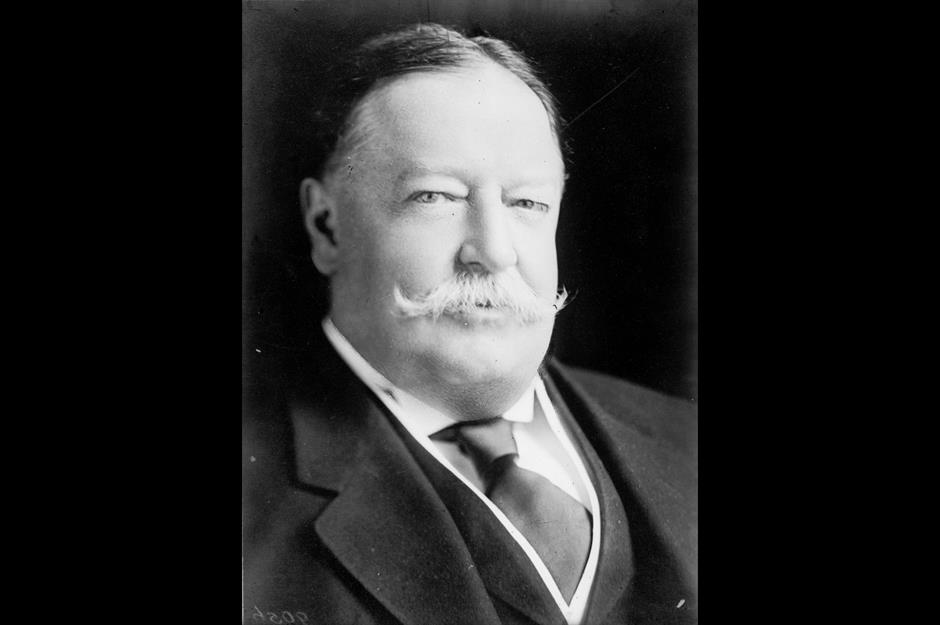
After studying at Yale, William Howard Taft received his law degree in 1880 from Cincinnati Law School. A supporter of the Republican Party, he took a keen interest in politics until his career began to soar in 1887, when he was appointed to fill the unfinished term of a judge of the Superior Court of Cincinnati. The next year, he was elected to his own five-year term, before serving as a judge of the US Court of Appeals for the Sixth Circuit between 1892 and 1900.
In 1901, Taft was appointed governor of the Philippines by President McKinley, before returning to Washington in 1904 to join President Roosevelt’s cabinet as secretary of war. He succeeded Roosevelt as president, serving a single term between 1909 and 1913.
Woodrow Wilson: lawyer, teacher, politician
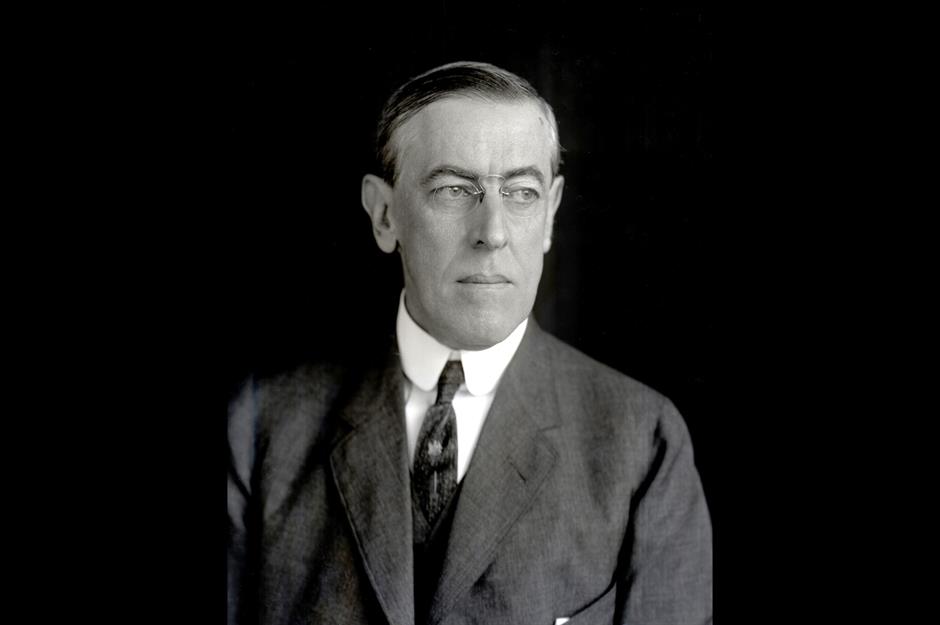
The Democratic Party finally seized power when Woodrow Wilson became president in 1913. Despite his presumed dyslexia as a child, Wilson displayed a strong interest in politics and literature. After graduating from Princeton University in 1879, he studied law in the hope that a legal career would lead to a political one. He ended up studying government and history at Johns Hopkins University, where he earned his Ph.D. in political science in 1886.
A professional academic, Wilson held several teaching posts at Ivy League schools, notably at Princeton, where he became president (as well as the highest-paid staff member) in 1902. His success attracted the attention of the Democratic Party, and in 1910 he left academia behind when he was elected governor of New Jersey. Two years later, Wilson became president, achieving his ultimate political ambition. He served for two terms between 1913 and 1921.
Warren G. Harding: journalist, publisher, politician
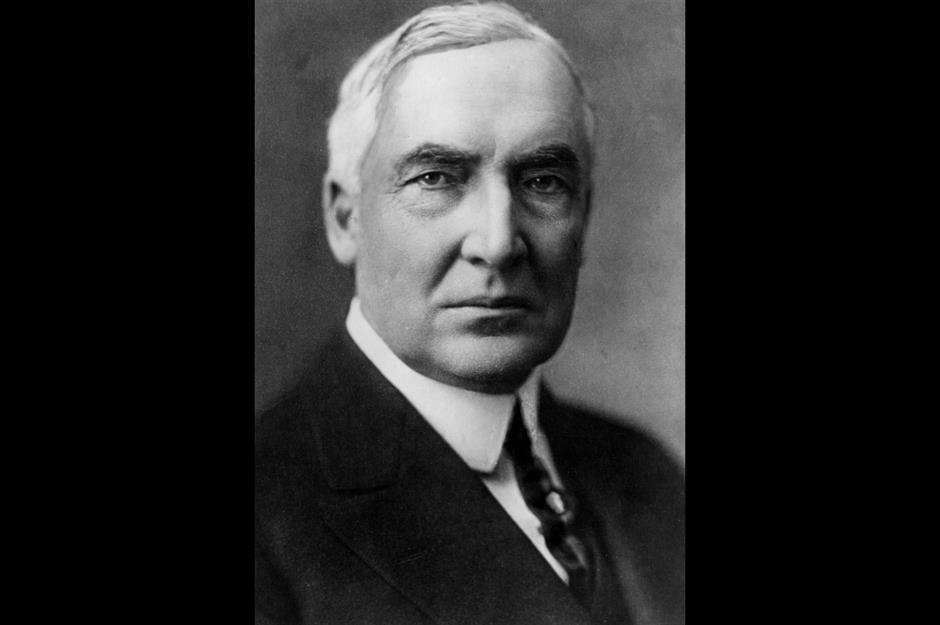
Despite Wilson's successful two-term run, the Republicans won the presidency back in 1920 when Warren G. Harding was voted in. As a child, Harding had received an uninspiring education at local Ohio schools and had tried his hand at various jobs before buying a struggling newspaper, The Marion Star, in 1884. With the help of his wife, Florence Kling De Wolfe, Harding transformed the newspaper into a successful daily publication.
Despite his distinct lack of political prowess, it's claimed that the handsome Harding looked the part of a leader, which propelled his success. He entered public life for the first time in 1900 when he began serving as a member of the Ohio Senate. He was then elected lieutenant governor before being elected to the US Senate (1915-1921). He was inaugurated as president in 1921 but only lasted in the role until 1923, when he died suddenly from either a heart attack or a stroke.
Calvin Coolidge: lawyer, politician, VP
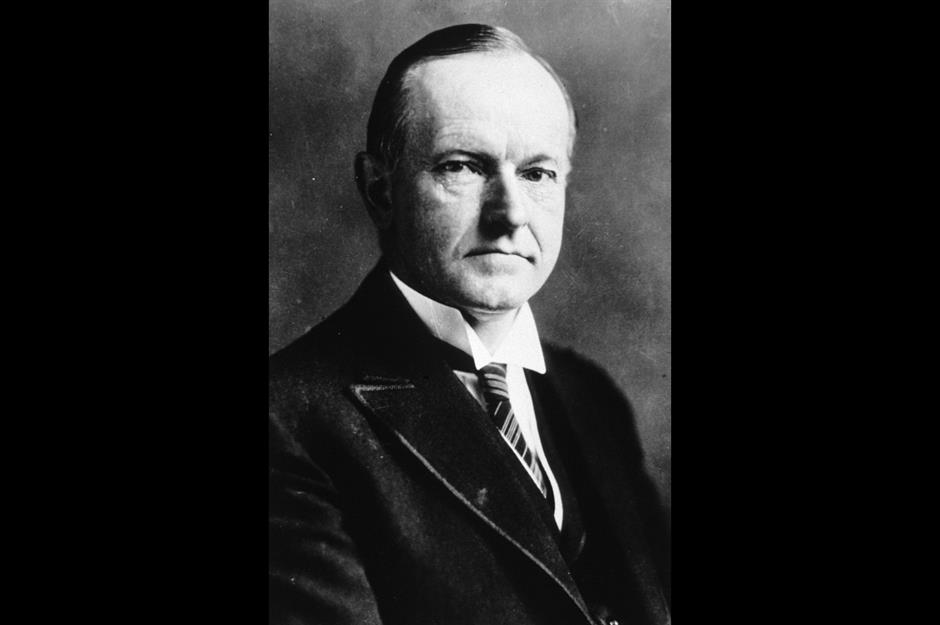
Calvin Coolidge's path to the presidency is all too familiar: he started his own law firm in 1898 before becoming involved in the Republican Party.
Coolidge steadily climbed the political ranks and was elected mayor of Northampton, Massachusetts, in 1915. Next, he served in the state legislature before being elected lieutenant governor of the state and rising to the governorship in 1919. Two years later, Coolidge was elected VP under President Harding. He became president following Harding's untimely demise and served in the role between 1923 and 1929.
Herbert Hoover: miner, businessman, politician
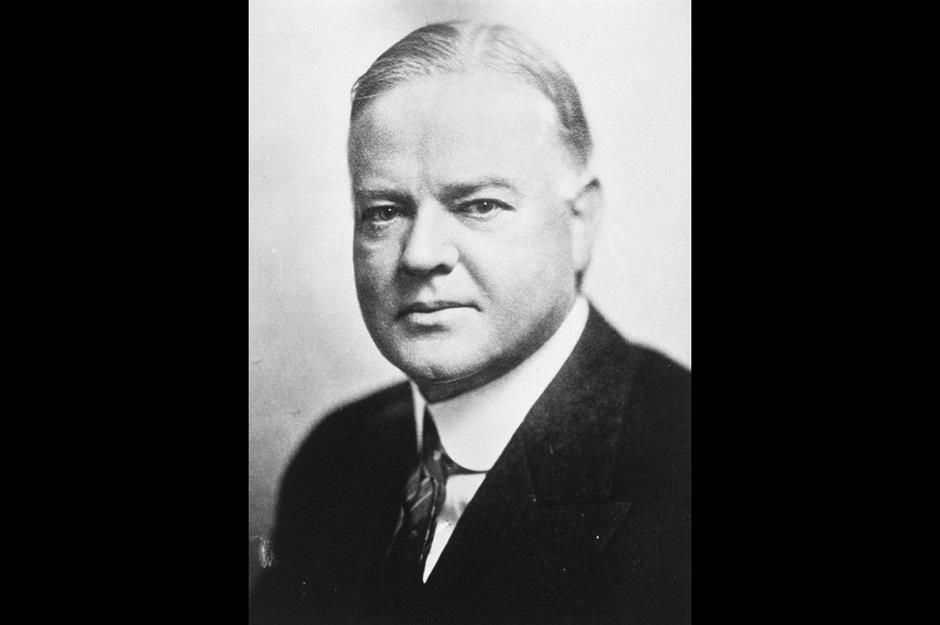
Eschewing the law degree popular among presidents, Herbert Hoover earned a degree in geology from Stanford in 1895 and went to work, lucratively, as a mining engineer. By 1914, he was estimated to have an inflation-adjusted fortune of around $130 million.
Known for his philanthropy, in 1914 he assisted Americans stuck in Europe following the outbreak of WWI. He then led the Commission for Relief in Belgium before President Wilson appointed him to head up the United States Food Administration for the remainder of the war. Then, in 1921, President Harding named Hoover the secretary of commerce. He successfully ran for president in 1927 on the Republican ticket and served a single term from 1929 to 1933.
Franklin D. Roosevelt: lawyer, politician
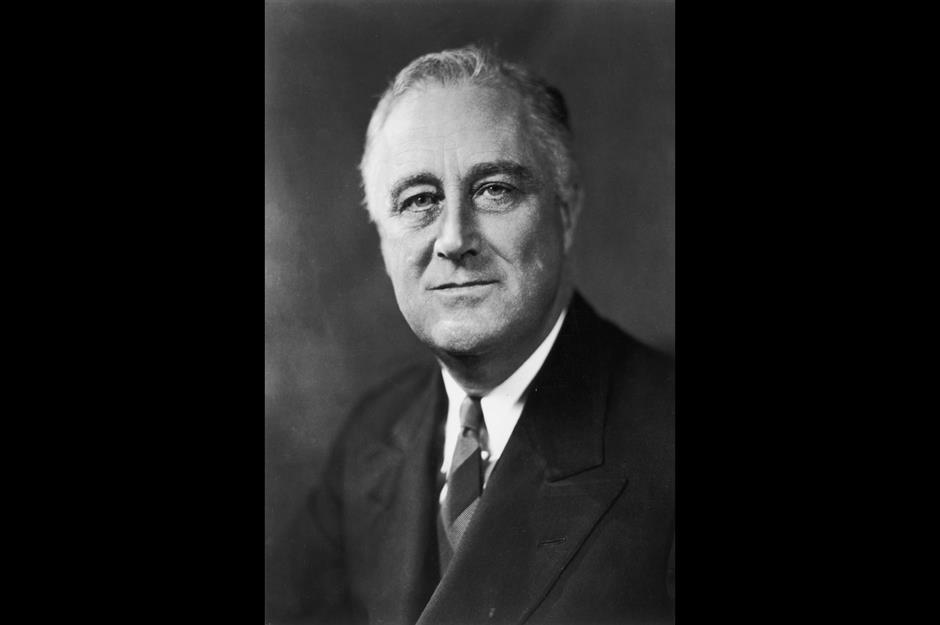
A distant cousin of Theodore Roosevelt, Franklin D. Roosevelt is the only president to have served more than two terms in office. At Harvard, he was uninterested in his studies, preferring social activities, and after graduating from Columbia Law School he was hired by a Wall Street law firm. However, he showed the same disregard for the work as he did for his education. Inspired by Theodore Roosevelt, Franklin decided to pursue politics and ran for a seat in the New York legislature.
Later appointed assistant secretary of the Navy, when the US entered WWI in 1917, Roosevelt quickly established a reputation as an adept administrator. Following the war, he continued to make a name for himself in politics, despite suffering from polio in 1921 and withdrawing from public life while recovering.
Refusing to let his illness destroy his career, he successfully ran for governor of New York in 1928 and POTUS in 1932. He died during his fourth term in 1945 as the result of a brain hemorrhage.
Harry S. Truman: timekeeper, bank clerk, farmer, military officer, politician
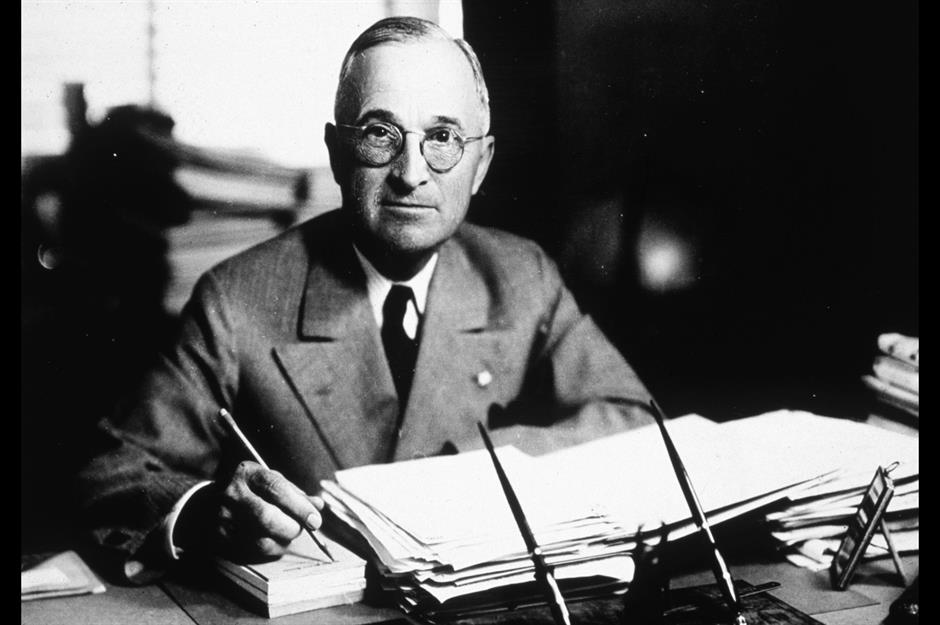
The Missouri native followed a less familiar path to the White House. Graduating from high school in 1901, Harry S. Truman signed up to business school but left after a year. He worked as a timekeeper for AT&SF Railway before becoming a clerk at the National Bank of Commerce in Kansas City. In 1906, he moved to his family farm near Grandview, Missouri, taking over after his father's death in 1914.
When America entered WWI, 33-year-old Truman, who’d completed two tours in the National Guard, swiftly volunteered. He was deployed to France and served as a captain, becoming highly respected among his forces. Truman returned to America in 1919 and opened a haberdashery in Kansas City, but the business failed due to the country's ongoing recession. At that point, he started pursuing a political career.
He held various judge positions for more than a decade before running for Senate, where he spent another 10 years. Tapped to run as vice president under Franklin D. Roosevelt in 1944, he became president when the famed statesman died. Despite initially being unprepared for the job, he won a second term, ultimately serving from 1945 until his retirement in 1953.
Dwight D. Eisenhower: military general, university president, author

Another military man turned president, Dwight D. Eisenhower graduated from West Point in 1915 and rose to the rank of captain during WWI. Popular and well-respected, Eisenhower continued to climb the military ranks through WWII to lead the Normandy Invasion of 1944. By the end of the year, he had been promoted to a Five-Star General.
Returning home in 1945, Eisenhower had plans to retire from military life, but President Truman instead appointed him Army Chief of Staff, which he accepted. Three years later he left the military and became president of Columbia University, publishing his book, Crusade in Europe, that same year. However, his academic career was short-lived, and he was appointed Supreme Commander of the North Atlantic Treaty Organization (NATO) in 1951.
While talk of Eisenhower as a Republican candidate for president had been circulating since 1943, he didn’t run until 1952. He served two terms between 1953 and 1961.
John F. Kennedy: secretary, author, naval officer, politician
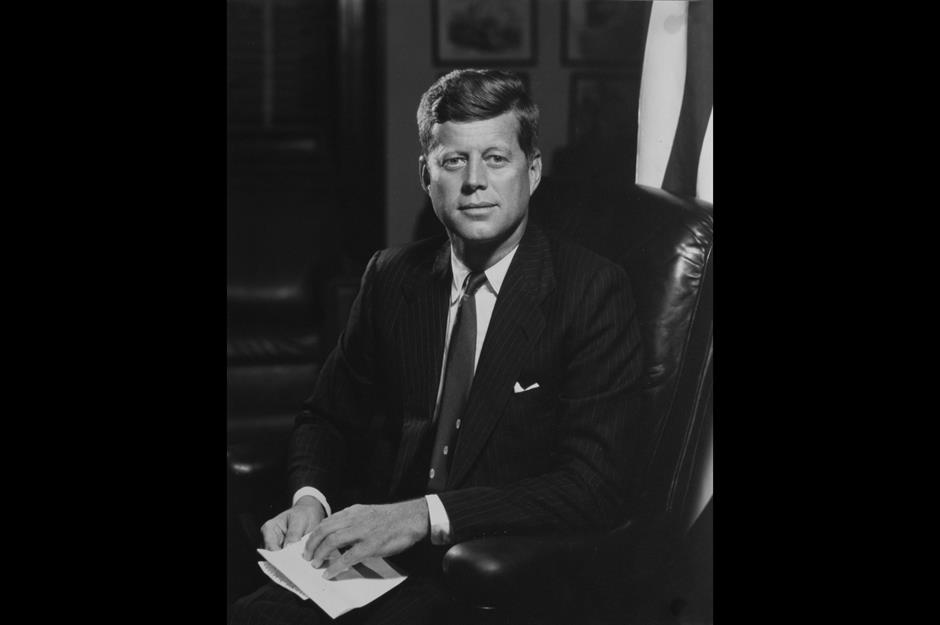
The youngest man ever to be elected president, Democrat John F. Kennedy (or JFK), was just 43 when he won the White House. Born into a wealthy Massachusetts family, the nine Kennedy children each had a trust fund that would provide them with financial freedom for the rest of their lives.
While still a student at Harvard, JFK served as his dad’s secretary when he was appointed the US ambassador to Great Britain in 1938. He used this experience to write his thesis, which became a best-selling book about military unpreparedness, Why England Slept, published in 1940.
During WWII, he enlisted in the Navy and afterward planned to work as an academic or journalist. However, his father had a different idea. Having groomed his older son, Joe, who died in the war, for the presidency, he encouraged JFK to enter politics instead. Despite being only 29 years old, in 1946 JFK ran for Congress and won, leaving his seat in 1953 to join the Senate.
A popular political figure, Kennedy was elected president in 1960 and took office in 1961. His stint was short-lived, as he was assassinated on November 22, 1963, in Dallas.
Lyndon B. Johnson: teacher, politician, VP

Following JFK's assassination, his vice president, Lyndon B. Johnson, entered the White House. Johnson began his career in a field far removed from politics, enrolling in Southwest Texas State Teachers College (now Texas State University). During his studies, he worked as a teacher in Cotulla, Texas.
Johnson traded teaching for politics when he graduated and started working as an aide on Capitol Hill. At 29 years old, he successfully ran for Congress in 1937. He was then elected to the US Senate in 1949, before becoming vice president under John F. Kennedy in 1960 and advancing to president. Despite the grim circumstances behind the promotion, Johnson was re-elected and served until his retirement in 1969.
A wealthy man before stepping into the White House, the New York Times reported Johnson's fortune to be $20 million at the time of his death in 1973, which is $145 million when adjusted for inflation.
Richard Nixon: lawyer, naval commander, politician
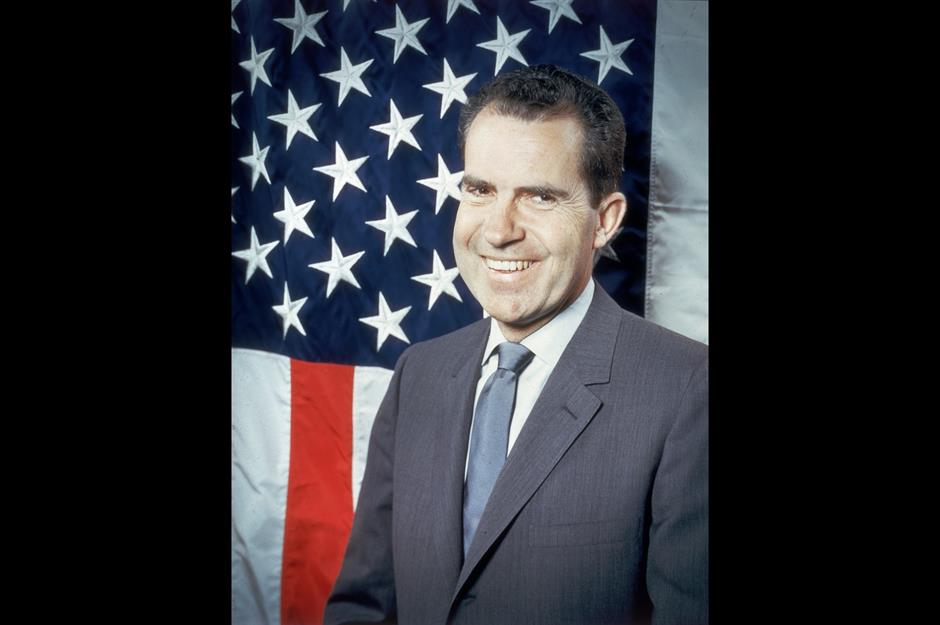
Richard Nixon graduated from Whittier College in California in 1934 and then received a scholarship to attend law school at Duke University. He graduated in 1937 and returned to Whittier to practice law before joining the Navy in 1942, eventually reaching the rank of commander.
After retiring from the military in 1946, Nixon was elected to Congress, serving from 1947 to 1950 before being elected to the US Senate. He was appointed vice president under Eisenhower in 1953 but failed to succeed him. He was eventually elected in 1968 and renominated in 1972, although his second term was cut short by the Watergate scandal. Faced with impeachment, Nixon stepped down in 1974, making him the only president ever to resign from office. Despite the scandal, Nixon managed to grow his personal fortune following the presidency; by the time he died in 1994 he had a reported fortune of $15 million, or $32 million in today’s money.
Gerald Ford: lawyer, naval officer, politician
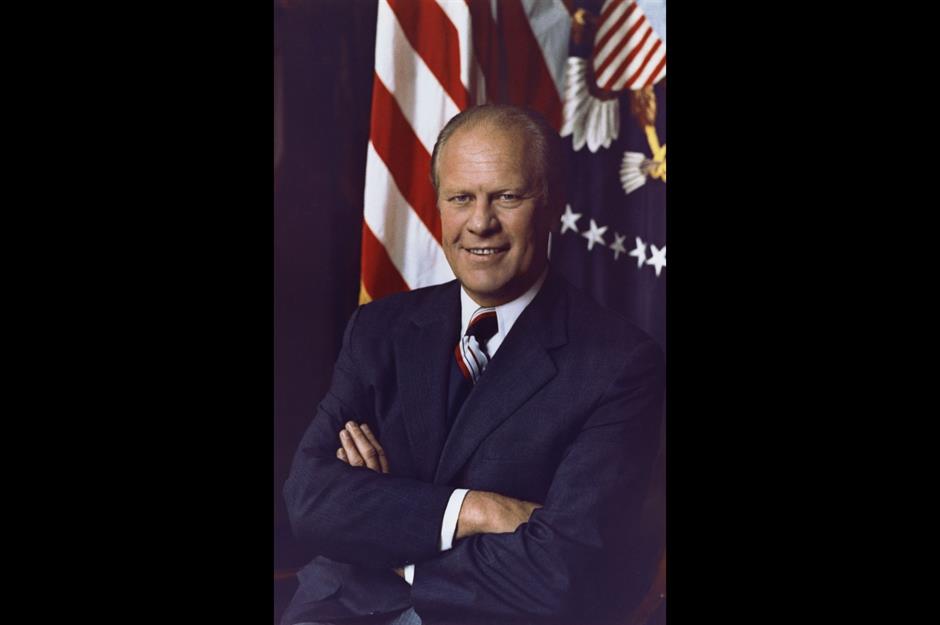
Following Nixon's resignation, VP Gerald Ford took over. He had followed a familiar path to the presidency, first earning a law degree from Yale, before joining the Navy during WWII and then going into politics. However, he actually had another career option as the MVP of the University of Michigan football team, getting offers from both the Detroit Lions and the Green Bay Packers that he declined.
He served in Congress for 25 years (1949-1973) and became the minority leader of the US House in 1965. He held this position until 1973, when Nixon selected him as vice president. He entered office following the Watergate scandal and remained for the rest of the term until 1977. Despite a colorful tenure as commander in chief, including two attempts on his life, Ford was liked and widely regarded as an 'everyman' figure. By the time he passed away in 2006, he had grown his net worth to the equivalent of around $11 million in today's money.
Jimmy Carter: naval officer, peanut farmer, politician
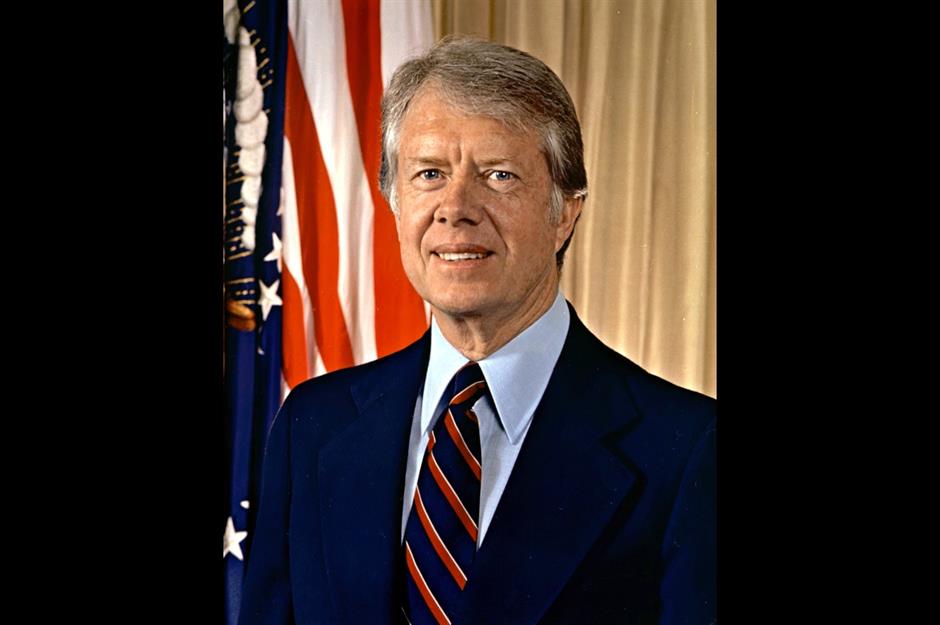
Democrat Jimmy Carter was the next man to take control of the White House. Following his graduation from the US Naval Academy in 1946, he spent seven years in the Navy, planning to become an engineering officer for the submarine USS Seawolf in 1953. Unfortunately, the death of his father that same year brought him home to Georgia to manage the family's peanut farm.
Carter was elected to the state Senate in 1962, serving until 1966, when he unsuccessfully ran for governor of Georgia. Four years later he ran again, this time getting elected. Following his stint as governor (1971-1975), he successfully ran for president in 1976. Carter, who died aged 100 on December 29, 2024, served a single term between 1977 and 1981.
Ronald Reagan: radio announcer, actor, TV host, politician
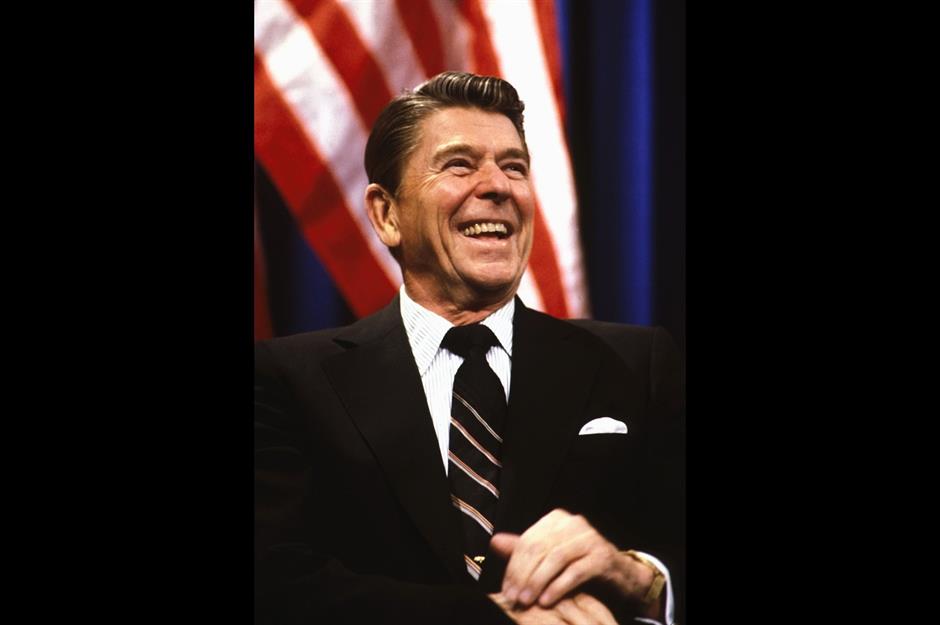
Ronald Reagan entered the White House as a wealthy man with a reported net worth of $10.6 million or $37 million in today’s money, thanks to a successful Hollywood career. That’s right, Reagan was a radio announcer and actor before pursuing politics, making his movie debut in 1937 after a successful screen test with Warner Bros. In a career spanning nearly three decades he appeared in more than 50 films.
During WWII, Reagan was assigned to an army film unit based in Los Angeles, where he spent the war creating training films. In the 1950s he served as president of the Screen Actors Guild and became the host of the television show General Electric Theater, also serving as a spokesman for the General Electric Company (GE). In this latter role, he toured GE plants, delivering pro-conservative speeches, although he was fired in 1962 when his talks became too controversial.
Reagan then tried his hand at politics, serving as governor of California from 1967 to 1975. Although he considered running for president many times, he didn’t win the White House until 1980. Reagan served two terms between 1981 and 1989, and even survived an assassination attempt in the process.
George H. W. Bush: naval pilot, businessman, politician
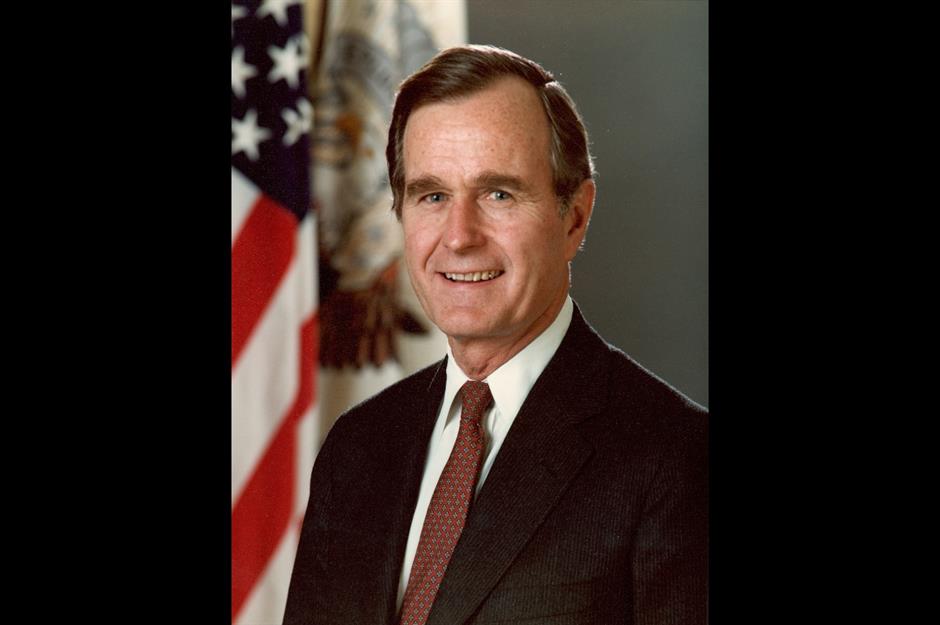
Vice President George H.W. Bush succeeded Reagan as president and had a far more conventional resumé. Upon leaving school, Bush joined the US Naval Reserve. He served during WWII, becoming one of the youngest naval aviators. After the war he studied at Yale, as per family tradition, and graduated with an arts degree in 1948. Bush then moved to Texas, where he became a salesman for oil field supplies and co-founded three oil companies.
An active supporter of the Republican Party, Bush was elected to Congress in 1966 (serving from 1967-1971), before being appointed to Director of Central Intelligence (DCI); he was specifically in charge of the Central Intelligence Agency (CIA). He then served as Ronald Reagan's VP for both of his terms, before being elected president himself. Bush was POTUS for a single term between 1989 and 1993.
Bill Clinton: lawyer, teacher, politician
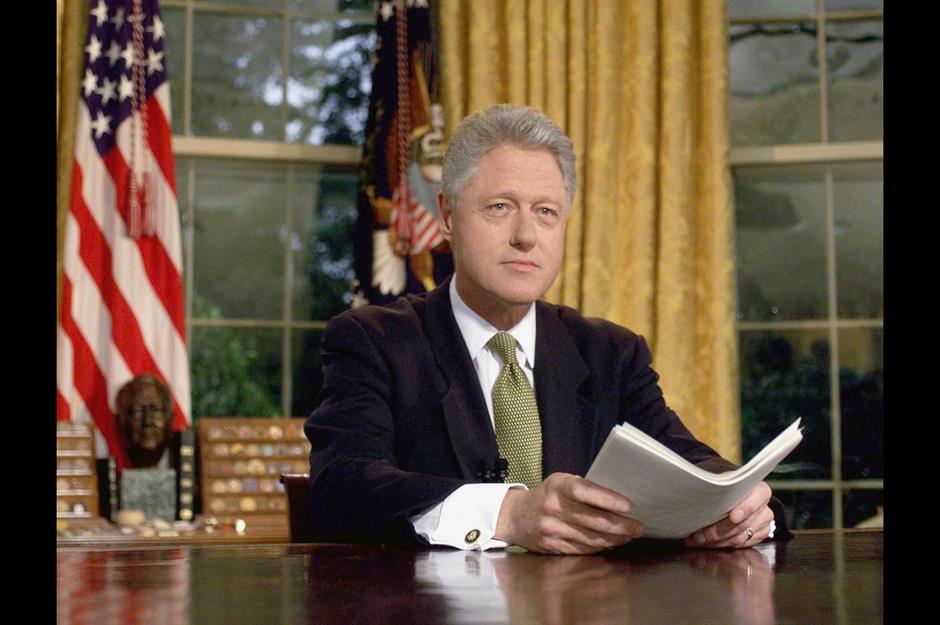
Bill Clinton had harbored presidential ambitions ever since he was a child and met President Kennedy. Clinton earned a degree in international affairs from Georgetown University before graduating from Yale University's Law School in 1973. He taught at the University of Arkansas School of Law until 1976. Two years later, Clinton sparked his political career when he was elected as governor of Arkansas. He lost this position in 1980 but fought hard to be re-elected in 1982, serving until 1992.
A decade later, Clinton's presidential aspirations were achieved. He served for two terms, from 1993 to 2001, although his time in the White House was overshadowed by scandal. In 1998, Clinton became the second president to be impeached, though he was acquitted by the Senate in 1999. Despite the controversy, his fortunes soared after he left office due to lucrative speaking gigs.
George W. Bush: naval pilot, businessman, politician
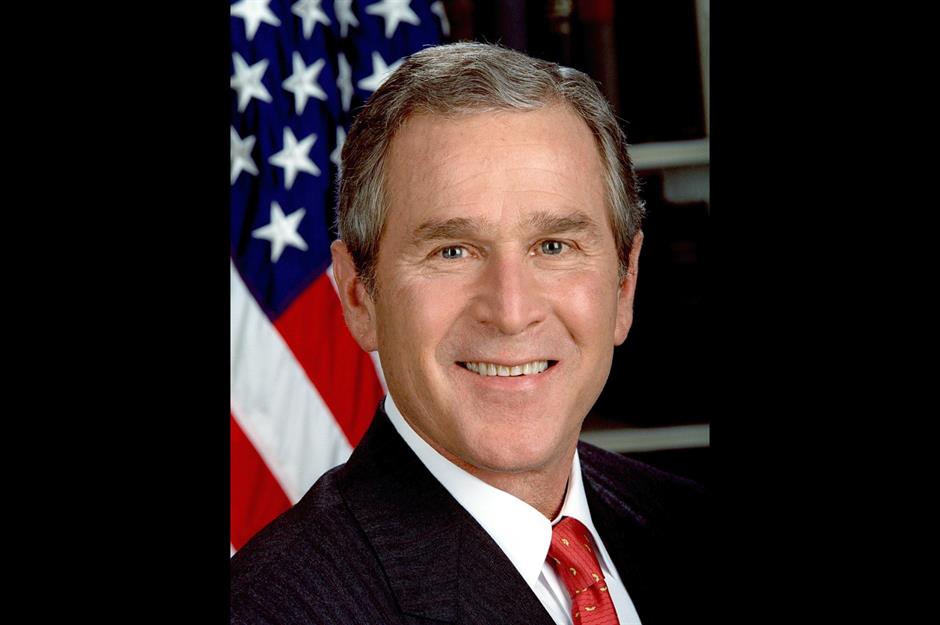
George W. Bush, the son of the former president, walked into the White House with a hefty $20 million in the bank, making him the second richest modern-day president after Donald Trump. After receiving a history degree from Yale in 1968, Bush became a fighter pilot. He was granted an early discharge to study at Harvard Business School, where he completed an MBA in 1973 (he is the only president to have this particular qualification).
Following Harvard, Bush created and built his own oil company throughout the 1970s and 1980s. He and a former business partner arranged for a group of investors to purchase the Texas Rangers baseball team, and when the team was sold in 1998, Bush pocketed $15 million ($29 million in 2025), which made up most of his pre-presidential fortune.
Following in the footsteps of his father, Bush pursued a political career and was elected governor of Texas in 1994. He won the 2000 presidential election and entered the White House in 2001. His first term was marred by tragedy due to the 9/11 terrorist attacks, and he served a second term until 2009.
Barack Obama: lawyer, author, teacher, politician
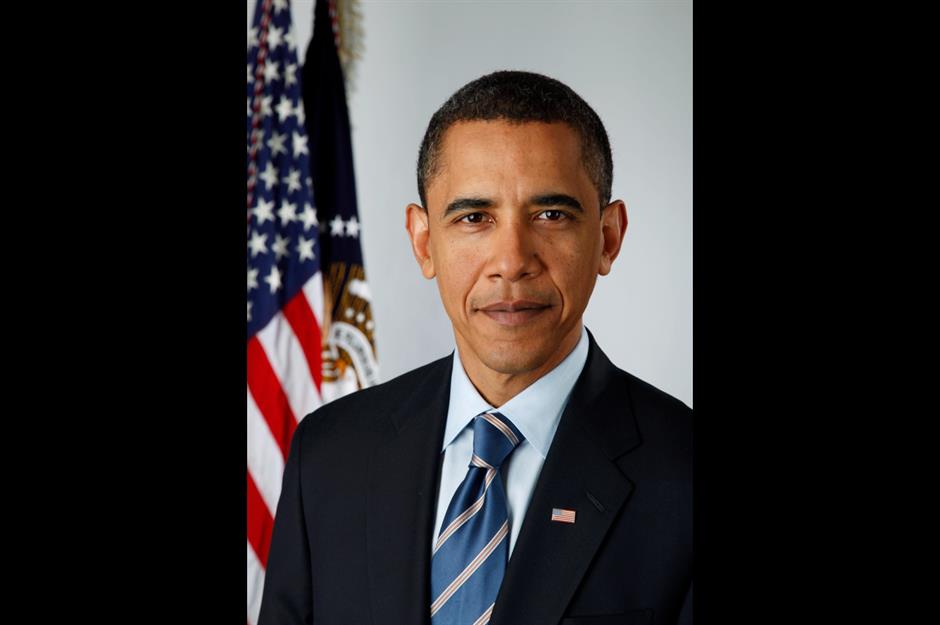
Barack Obama made history when he became the first Black man to be elected President of the United States. His road to the White House began in 1983, when he graduated from Columbia University with a degree in political science. He then attended Harvard Law School, graduating in 1991.
From there he went to Chicago and became an active member of the Democratic Party, publishing his first book, a memoir titled Dreams From My Father, in 1995. Around this time, he also taught constitutional law at the University of Chicago and worked as an attorney on civil rights issues. Obama was elected to the Illinois Senate in 1996 and the US Senate in 2004. The latter position increased his public profile considerably, and he published a second book, The Audacity of Hope, in 2006, which became an instant bestseller. With his star on the rise, Obama announced his intent to run for the presidency in 2007. He won the 2008 election, serving in office for two terms between 2009 and 2017.
Donald Trump: businessman, actor, TV host
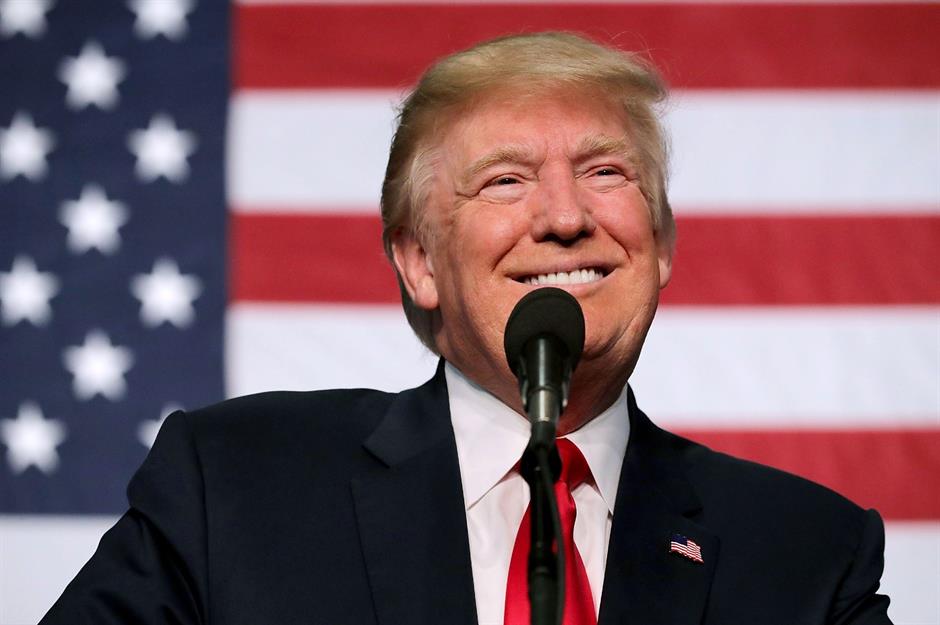
Donald Trump had a colorful career prior to his presidencies. After graduating from the Wharton School at the University of Pennsylvania in 1968 with a degree in economics, he worked for his father's real estate business. In 1974, he became president of a conglomeration of Trump-owned corporations and partnerships, later named the Trump Organization.
Along with his business career, Trump boasts several more eyebrow-raising accolades on his resume. He dabbled with film and TV; his most famous movie appearance is probably in the 1992 Christmas flick, Home Alone 2: Lost in New York. His showbiz career exploded in 2004, however, when he became the host of the reality TV series, The Apprentice. Trump stayed on the show until 2015, when he announced his plans to run as the Republican candidate in the 2016 presidential election.
Despite many disregarding Trump as a serious contender due to his lack of political experience, he won, serving as president between 2017 and 2021. Trump’s run was marked by controversy, and he is the only president in history to have been impeached twice. After his 2024 re-election, he's the second president to serve two non-consecutive terms.
Joe Biden: lawyer, politician, VP
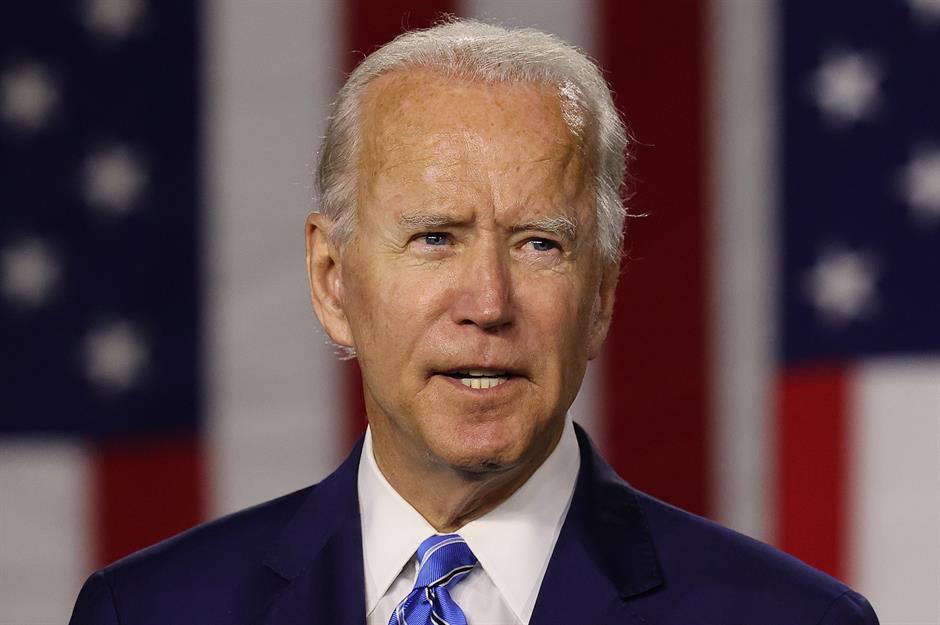
Despite Trump's confidence that he would be re-elected for a second term immediately following his first, he was dramatically defeated in the 2020 election by Joe Biden. President Biden’s resume is more familiar. He earned a law degree in 1968, graduating from Syracuse University in New York. He then briefly worked as an attorney before switching to politics. Elected to the US Senate in 1972, he was 29 at the time, making him one of the youngest senators in history. He served from 1973 to 2009, becoming Delaware’s longest-serving senator.
Biden had chased presidential dreams for decades. He campaigned for office in 1988, but withdrew when it was revealed parts of his speech had been inspired by Neil Kinnock, the British Labour Party leader, whom Biden quoted without attribution. His attempt to run again in 2008 was thwarted when his campaign failed to gain momentum. However, President Obama appointed Biden as his VP, and he served in the position between 2009 and 2017. Biden finally achieved his ambition when he defeated Trump in a hard-fought 2020 election, and despite Republican claims that the election was rigged, Biden took office in 2021. He withdrew his subsequent 2024 presidential campaign, passing the baton to Kamala Harris, who ultimately lost to Donald Trump.
Now discover the richest world leaders of all time: ranked
Comments
Be the first to comment
Do you want to comment on this article? You need to be signed in for this feature